Дорогие друзья!
Говоря про наше путешествие в Латвийскую Республику, сразу хочется сказать, что это единственный раз, когда нам еще во время путешествия уже хотелось обратно домой.
То есть как обычно: за день до окончания отпуска начинаешь ныть, вот бы еще мне дня два и триста баксов. А тут: ну, когда уже домой?
А с другой стороны – каждому своё.
Итак, вылет из солнечной Одессы в сторону туманной и дождливой Риги уже очень хорошо отображают фотографии непосредственно из иллюминатора самолета, поэтому их так много.

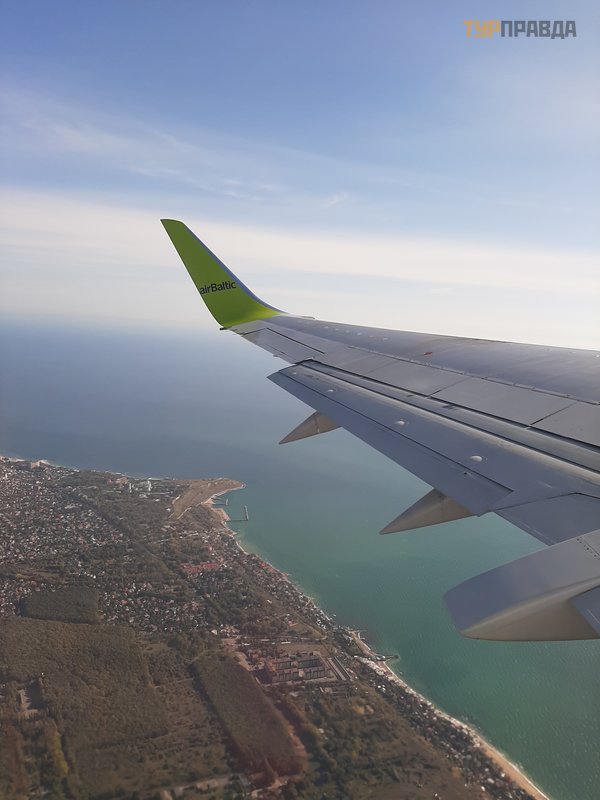



Откровенно говоря, погода в Латвии не была для нас какой-то новостью, даже планировали купить там, если что, зонтики, да и взяли с собой дождевики – дешево и удобно. Много места не занимают – мы летели без багажа.
Как известно, климат Латвии имеет переходный характер от морского к континентальному, который смягчается близостью к Балтийскому морю. Преобладающие юго-западные ветра приносят со стороны Атлантики значительное количество осадков. Небо часто затянуто облаками, число солнечных дней всего 30-40 в год. Самый солнечный и сухой месяц – это май, а мы были в середине октября. Зима длится с середины декабря по середину марта.
Поэтому пока не началась зима, решили мы в октябре на выходных посмотреть, что это за Прибалтика такая и, конечно, был шкурный, точнее ювелирный интерес – ну хоть если на побережье не найти солнечный камень, выброшенный прибоем на берег, то хотя бы прикупить себе каких-никаких сувениров из янтаря, добытого непосредственно в Латвии.
СОВЕТ: по прилету в аэропорт Риги не спешите искать автобусы и не обращайтесь к таксистам, стоящим сразу у входа. Можно спросить у местных жителей телефон любого сервиса и позвонив им, сказать, что хотите добраться в город по фиксированному тарифу. Нам поездка обошлась 6 евро. К слову, цена у таксиста непосредственно перед выходом из аэропорта была 8 евро (туда-сюда 1-2 евро, вот вам и сувенир на сэкономленные деньги).
Нам попался русскоговорящий таксист. Собственно говоря, как нам попадались и все остальные 99.9% полицейских, продавцов в супермаркетах, кассиров на ж/д вокзале и автостанциях, бабушек на рынке, продающих грибочки и ягоды, и всех остальных жителей Латвии. В общем, этот таксист подсказал нам, как лучше добираться в Сигулду (потому что по пути туда был ремонт дороги) и подсказал, где проходят какие акции, типа ярмарок и распродаж, а также рассказал про концертную театральную программу, которой, к сожалению, мы не воспользовались – были-то всего три дня.
Ну мы и не претендуем на звание эстетов из Ленинграда, как в известном анекдоте, то есть в консерваторию не ходим, потому что консервы не любим…
Вообще, нет никаких проблем найти взаимопонимание с жителями Латвии (общее население которой по оценке на 1 января 2020 года, составляет 1 90.100 человек) – незнанием языков (английского, русского и украинского) страдает только молодежь, как праздно шатающиеся по улицам и паркам, так и достойно работающая консультантами и продавцами в продуктовых магазинах и торговых центрах, например Риги, население которой составляет более полумиллиона жителей, но, говорят, что и весь миллион.
Вообще, мы увидели и услышали со слов местных жителей достаточно много недовольства уровнем развития страны, да мы и сами в поисках товаров, произведенных непосредственно в Латвии, были ограничены выбором между шпротами, рижским бальзамом и вязаными носками – все остальное китайского производства, даже янтарь привезен из Калининграда.
За что можно похвалить конкретно рижан, да и всех латышей вообще – так это за чистоту. Улицы, парки, любые переулочки между домами вычищены до блеска. При этом мы даже видели, как у впереди идущего мужчины выпал чек из магазина из кулька с покупками, а вслед идущая молодая мама с детской коляской наклонилась, подобрала и через несколько метров выбросила в мусорный бак.
К слову, при всей чистоте города, в частности, да и всей страны, в целом, найти мусорные баки – это задача не из легких. У них с этим какая-то проблема (за все время путешествия мы вечно носили в задних карманах джинсов бумажки, кульки и прочее, потому что мусорные баки встречались нам крайне редко). С таким раскладом они могут, наверное, даже что-то вроде квеста по поиску баков для мусора проводить.
Говорят, что надо для этого (прим. : автора: чтобы найти мусорные баки) смотреть на стены или за угол заглядывать, типа спрятали подальше, но кто же в это поверит-то?
Также насчет квеста можно придумать еще поиск дешевых магазинов с качественными латвийскими товарами. Вот с этим заданием мы не очень справились – сложно найти, почти все китайского производства.
О, чуть не забыли, на что нужно обратить внимание: есть мнение, что на туристов в Риге могут охотиться мошенники и мелкие воришки. Мы спрашивали у местных, типа, воруют? Одни говорили, что нет, другие – что если группа туристов достаточно большая, то к ней могут пристроиться карманники.
Итог такой: мы на практике убедились, что воруют. У нас вытащили из рюкзака за спиной отложенные деньги на более-менее стоящие покупки. Но вор оказался таким вежливым, что при обращении к ней (это была девушка) вернул нам изъятое с объяснением, что у нас что-то выпало из закрытого рюкзака и она бежала за нами от самого вокзала, чтобы отдать и благодарить её за это доброе дело не надо…
Будьте бдительны, особенно возле Ж/Д вокзала, пожалуйста.
В путешествие в Латвию мы собрались налегке. Без багажа. Тур не брали – купили перелет и оплатили проживание самостоятельно.
Выбирали долго. Начитались отзывов, наверное, про все апартаменты Риги – решили выбрать в непосредственной близости к центру города.
Взяли апартаменты возле (напротив) Пороховой башни.

Пороховая башня – это единственная сохранившаяся до наших дней башня, элемент системы городского укрепления Риги, в наши дни являющаяся филиалом Военного музея Латвии. Вдоль продолжения квартала от башни будет крепостная стена, с обратной стороны которой находится памятник привидению.
Конкретно скульптура с названием « Призрак» находится на территории так называемой Старой Риги на улице Трокшню, вблизи Шведских ворот и, соответственно, Пороховой башни.
Памятник изготовлен из чистой бронзы, общий вес составляет примерно 500 килограммов, установлен в рамках программы « Искусство в публичной среде» .

Гид, которого мы самостоятельно нашли на центральной площади Риги (об этом расскажем чуть позже), рассказал нам, что на самом деле этот памятник – дань событиям, произошедшим в незапамятные времена, как гласит одна из городских легенд, и посвящается несчастливой истории любви молодой девушки, которая жила в то время в Риге, и одного из солдат по имени некто Карл, состоящего на службе гарнизона и несшего свою службу в самой крепости Риги, у остатков крепостной стены которой как раз и размещается сам памятник. По приданию, девушка была казнена – её замуровали в крепостную стену.
И вот ночью, в полнолуние, когда дует ветер, здесь, на этом месте, иногда появляется призрак, который шепчет: « Я люблю тебя! Я люблю тебя! Я люблю тебя! » .
Тут же, возле Пороховой башни, располагается военный музей Латвии – один из старейших и крупнейших музеев Латвии. Основан в 1916 году. С 1919 года музей расположен в Пороховой башне. Большую и значительную часть фонда музея образуют предметы о военно-политической истории Латвии ХХ века. В основном фонде музея находится более чем 2.400 единиц, систематизированных в 22 коллекциях. Военный музей Латвии гордится своими коллекциями оружия, фотографий, документов, орденов и форменной одежды. В музее представлены постоянные экспозиции, посвященные Первой и Второй мировым войнам.
То есть для детей и взрослых, которые при виде оружия, как гласит кавказская пословица, тоже становятся детьми, одно из нужных и очень полезных мест, как говорится, нельзя калачом выманить наружу.
То есть мы выбрали очень романтичное и одновременно историческое место в самом центре города близи так называемой Старой Риги.
В общем, поселились мы в Яковлевских казармах или казармах Екаба.
Казармы Екаба были построены в конце XVII века для шведских воинов, защищавших город от вторжения врагов с северо-восточного направления. Именно эти казармы ранее практически вплотную примыкали к оборонительной городской системе. Между казармами и городской оборонительной стеной пролегал узкий проход, которым в настоящее время является улица Торня или, как её ещё называют, Башенная. Изначально казармы были деревянными.
В настоящее время Яковлевские казармы уже не используются по прямому назначению, в них располагаются сувенирные лавки, магазины, офисы, кафе и рестораны, а также учреждения и представительства городов Латвии, ну и наши апартаменты, соответственно.
Смешно немного, но когда проходили мимо казарм вместе с гидом, так та так значительно, показывая на казармы, сказала: « А вот тут у нас еще есть очень дорогущие гостиницы для туристов! » . А мы такие: « Ну-ну… » . И не удержавшись рассказали, что мы здесь живем в двухуровневой квартире.
После этого как-то грусть взяла нашу гидшу, то ли решила, что мало денег с нас за экскурсию взяла, то ли пожалела нас из-за дороговизны, по её мнению, проживания – не знаем. В общем, на некоторое время какой-то грустилогид с нами ходил, а потом отошла мгновенно, сразу как мы продлили время экскурсии, и она с каждого из нас еще по 5 Евро содрала.
Вернемся к архитектуре, а именно: из-за особенности конструкции казарм многие рестораны и магазины расположены в подвальных помещениях.
На торце здания Яковлевских казарм изображены гербы латвийских городов.

Итак, апартаменты Old Town Apartments.
Мы сняли двухуровневый номер, где на втором этаже располагается только спальня, а на первом – кухня-студия и есть небольшой диванчик. Апартаменты для комфортного проживания 4-5 человек. Все достаточно новое. Чисто. Было, правда, немного холодно, но мы связались с администрацией апартаментов и после нашего возвращения в тот же день температура внутри помещения существенно повысилась.
В большей степени нас больше интересовал антураж, а также месторасположение, но и условия проживания оказались достойные.


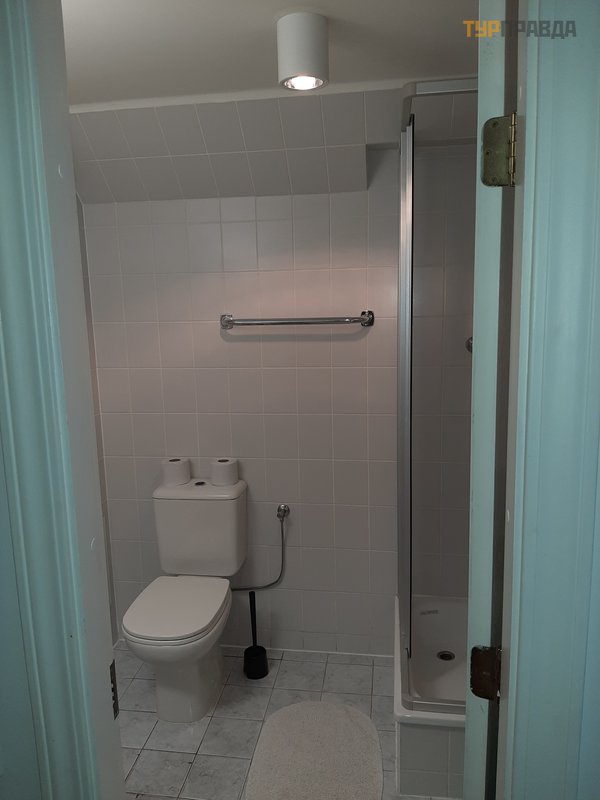


Вид из окна, естественно, прямо на Пороховую башню.

ОБЩАЯ ОЦЕНКА апартаментов Old Town Apartments: 4+ (ОЧЕНЬ ХОРОШО).
P. S. : у нас там кофточка Zara пропала, но после нашего расследования среди присутствующих на тот момент в номере, то есть нас и наших друзей, решили не грешить на друг друга или на клинеров апартаментов, а согласились с сомнительным, самим придуманным объяснением, что, мол, потеряли сами, засидевшись в одном из ресторанчиков.
Активный отдых начался – всем нужно идти в самый центр Старой Риги!
Старый город в Риге или Старя Рига – это старейшая часть города на правом берегу реки Даугавы, знаменита своими соборами и другими историческими зданиями. Границы Старой Риги – это набережная 11 Ноября, улица 13 Января, улица Кришьяня Валдемара и бульвары Аспазияс и Зигфрида Анны Мейеровица. Исторический центр Риги (Старый город/Старая Рига) включен ЮНЕСКО в список Всемирного наследия.
Как-то нелогично границы района получаются, казалось, раз начали с улиц в честь ноября и января, то с другой стороны, как минимум, должен быть март или хотя бы август, но нет (см. выше).
Проходя через узенькие улочки Старой Риги, вы сможете сразу почувствовать теплоту заботы жителей о своем городе, в котором смешались разные стили в архитектуре разных народов.
Здания и сооружения Риги сильно пострадали во время Второй мировой войны и были отреставрированы до изначального вида с большою педантичностью, чтобы радовать глаз на долгие времена.
Если идти от Пороховой башни, а не обходить вдоль движения транспорта, то вы пройдете вдоль городской стены с Башней Рамера, которая располагается на противоположной стороне от казарм Екаба, как раз через улицу Торня, находится часть оборонительной стены – фрагмент бывшего укрепления Риги. Вообще, во всем Старом городе от бывшей крепостной стены до наших дней дошли всего несколько фрагментов, одним из ярких примеров которых является именно эта часть.

В центре городской стены расположена оборонительная четырехугольная башня Рамера. Эта башня и стена использовались ранее как оборонительное укрепление города. Крепостная стена с башней Рамера были восстановлены то ли в 80-х, то ли в 90-х годах прошлого века.
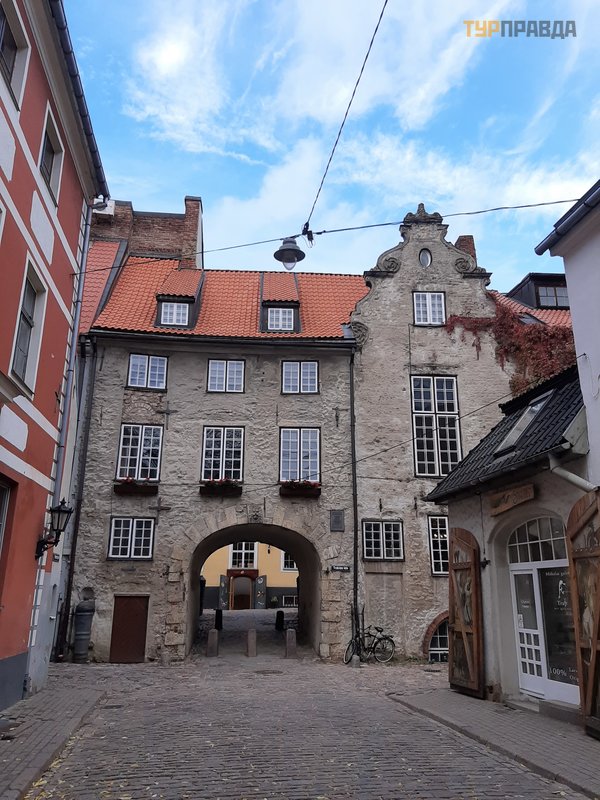

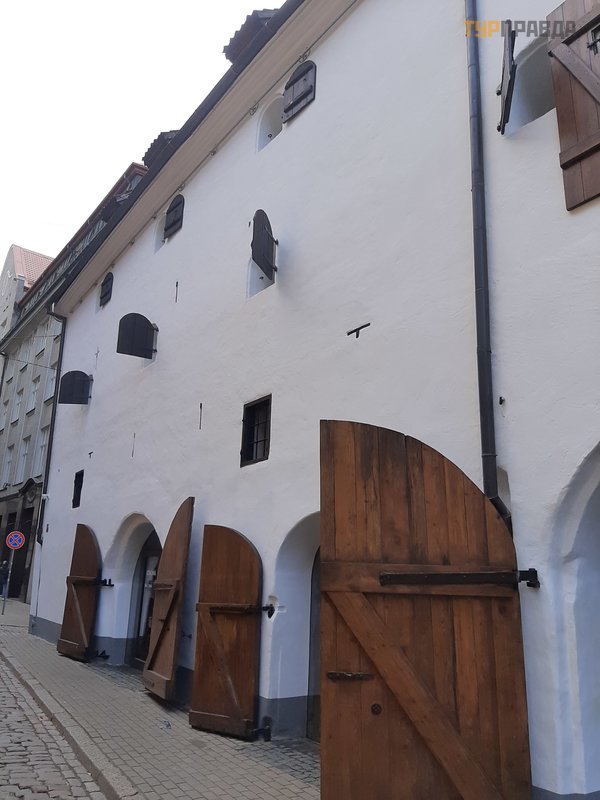
С обратной стороны крепостной стены вы также сможете посмотреть, как сегодня при сохранении внешнего вида зданий, например, тех же казарм, здания используются для размещения лавок, магазинов и таверн или просто как жилье.
Рядом со Шведскими воротами находится еще одна достопримечательность Риги, менее известная даже рижанам – Дом рижского палача. Расположен он по адресу улица Трокшню, 9.
То есть, войдя на территорию Старой Риги, по ходу движения сразу с правой стороны вы увидите первый дом с очень маленьким окошком.

Согласно городским легендам, в этом доме жил местный палач и через это окошко ему передавали либо послание о предстоящей работе или он сам предупреждал о предстоящей в ближайшее время казни, а именно:
По одной из легенд, когда-то палачом в Риге был молодой романтичный парень, поэтому в ночь перед казнью он выставлял в своем окне красную розу, предупреждая жителей города о предстоящей экзекуции. Романтик, короче…
Другая же легенда гласит, что через это маленькое окошко руководители магистрата (или чего у них там было) на тот момент оставляя перчатку предупреждали палача о предстоящей рабочей смене.
А мы движемся далее в центр города.
Ориентиром для движения в сторону центральной площади Старой Риги является как шпиль величественного здания, которое возвышается над всеми остальными строениями – Церковь Святого Петра, так и Домского собора.

Центральная площадь, или Домская площадь вымощена булыжной мостовой, на которой можно видеть контуры зданий, которые находились здесь ранее и были демонтированы при расширении размеров Домской площади Старой Риги.

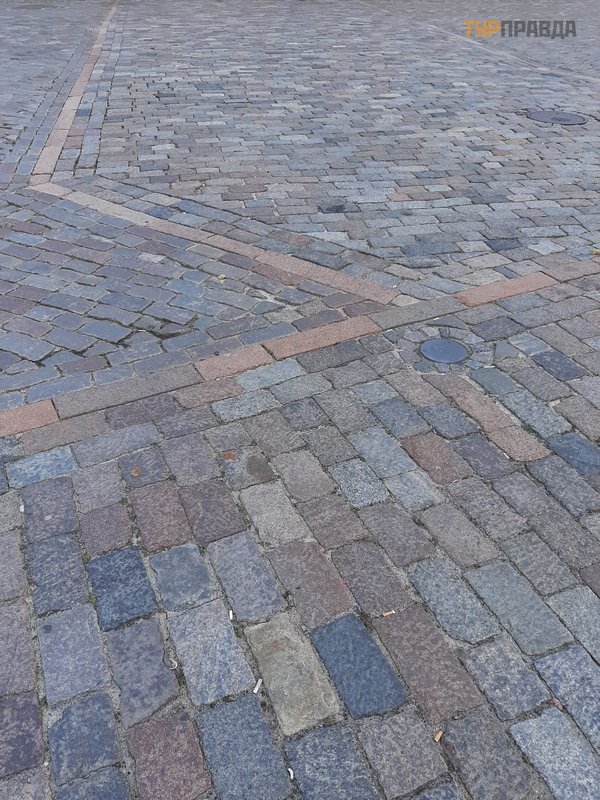
Как видно, улицы Старой Риги были гораздо уже, чем сейчас. Более компактное проживание объясняется в основном тем, что строения находились внутри крепостного сооружения, что подтверждается археологическими исследованиями, например при раскопках находят туннели под уровнем дороги, которые не только переходят от здания к зданию, которые располагались на разных сторонах одной улицы, но и указывают, что все строения ранее располагались друг к другу очень близко.
К слову сказать, на противоположной стороне Домской площади от Церкви Святого Петра вы сможете пройти через самую узкую улицу Старой Риги.
Улица Розена считается самой узкой улицей в Риге, в историческом районе Старого города. Расположена между улицей Шкюню и улицей Краму. Длина улицы составляет чуть более 92 метров. Однако местные жителю утверждают, что есть и более узкие улочки.

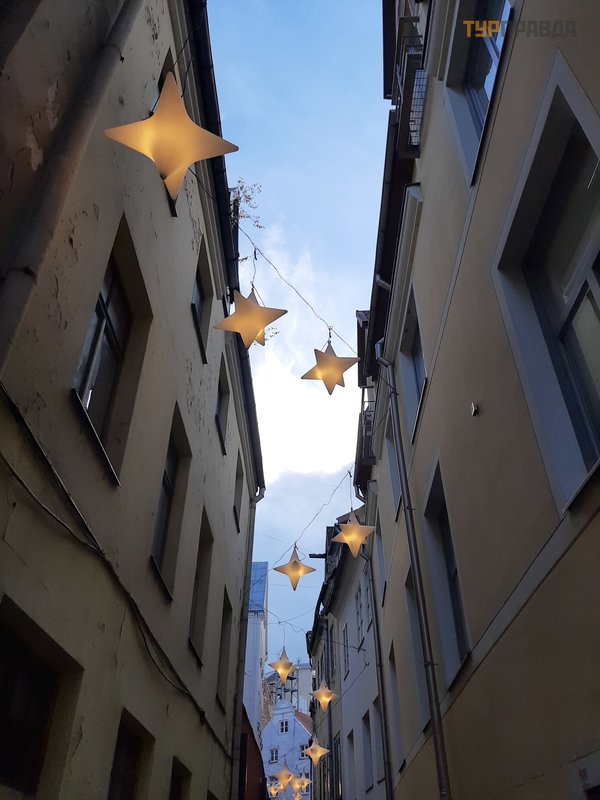
СОВЕТ: здесь, на Домской площади, можно найти гидов, которые могут вам предложить пешеходную экскурсию и прочие развлечения. В чем преимущество поиска таких услуг здесь: во-первых, у вас будет выбор гидов; во-вторых, у этих гидов могут быть достаточно весомые скидки при покупке сувениров или билетов в музеи и театры; и в-третьих, в случае, если вам не хватит времени экскурсии или вы решите продлить время общения с гидом, то за дополнительное время экскурсии вы доплатите меньше, если бы приобрели такие услуги в туристическом агентстве сразу.
Вообще, это не наше открытие, а мы также прочитали про пешеходные экскурсии по Старой Риге и про поиск гидов именно на Домской площади. Мы просто подтверждаем, что эта рекомендация оправдана и мы нисколько не жалеем, что взяли экскурсию не в каком-то агентстве или через Интернет, а воспользовались услугами найденного нами самими гида.
Церковь Святого Петра – это одно из старейших и культовых в странах Балтии строений, символ и достопримечательность столицы Латвии Также церковь Святого Петра представляет собой ценный образец монументальной средневековой архитектуры.





Церковь особенно знаменита своим оригинальным, широко узнаваемым шпилем. Общая высота башни церкви Святого Петра составляет 123.5 метра, из которых 64.5 метра приходится на сам шпиль. Башню украшают публичные часы, которые были установлены ещё в 14 веке. А шпиль украшает золотой петушок, который также служит как флюгер, указывающий направление ветра.
К слову сказать, предыдущий флюгер в виде петушка находится внутри церкви, а в лавках и сувенирных магазинах вы сможете увидеть сувениры с изображением именно этого флюгера.
Также снаружи (у алтарной части церкви) находится памятник бременским музыкантам. Со слов гида, этот подарок жителям Риги сделал муниципалитет Бремена.

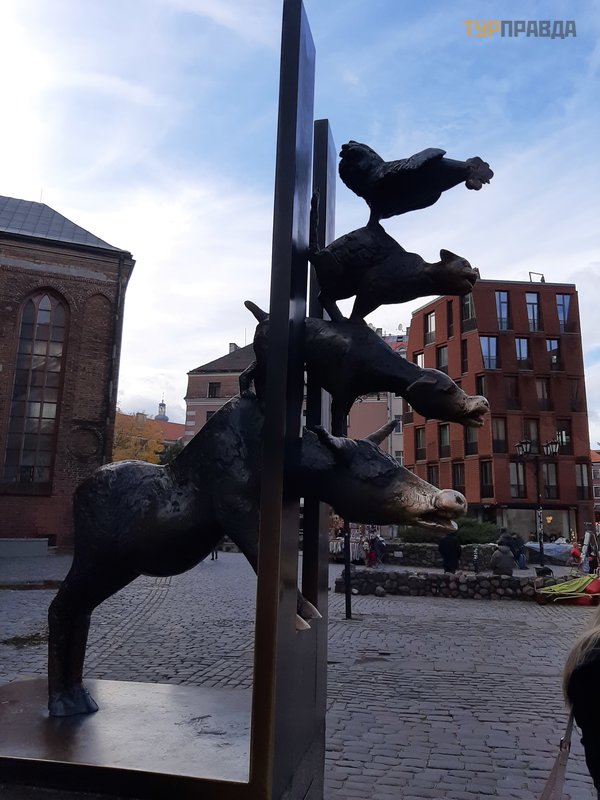
Есть мнение, что натирание носов животных принесет счастье – поэтому мордяхи бременских музыкантов начищены до блеска.
Также можно подняться на смотровую площадку на высоту 72 метров, с которой открывается неповторимая панорама Старого города, набережной реки Западная Двина и окрестностей города Риги.
Стоимость билета – 9 евро. Дети до 7 лет проходят бесплатно.
Есть лифт.
Итак, в самом сердце Старой Риги находится её самая большая площадь – Домская, в самом центре которой высится еще один символ города Риги, соответственно, Домский Собор с его знаменитым на весь мир органом. Туристы со всего мира приезжают в Ригу, чтобы своими глазами увидеть эту прекрасную площадь и красивейший во всей Балтии Домский Собор.

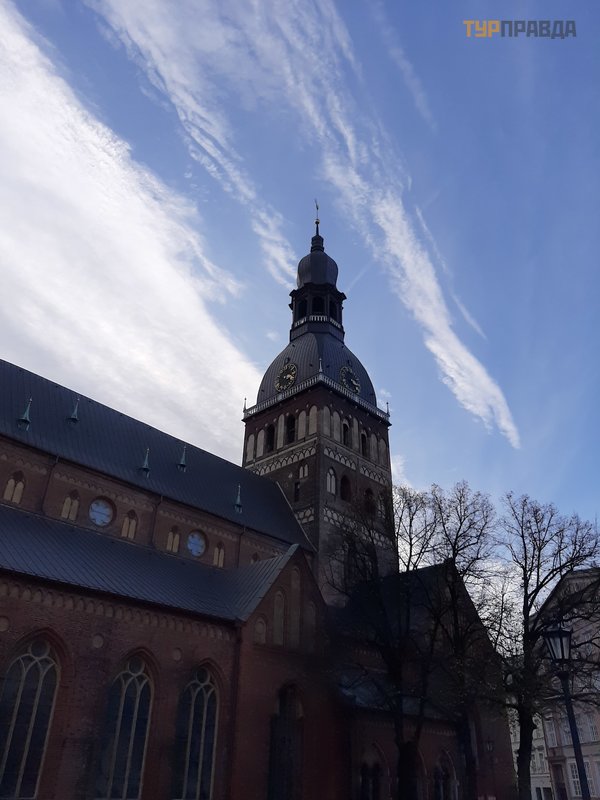
Витражи Собора были изготовлены в конце XIX – начале XX веков, в период, когда в ансамбле церкви проходила реставрация. Реставрация была проведена на деньги от пожертвований.
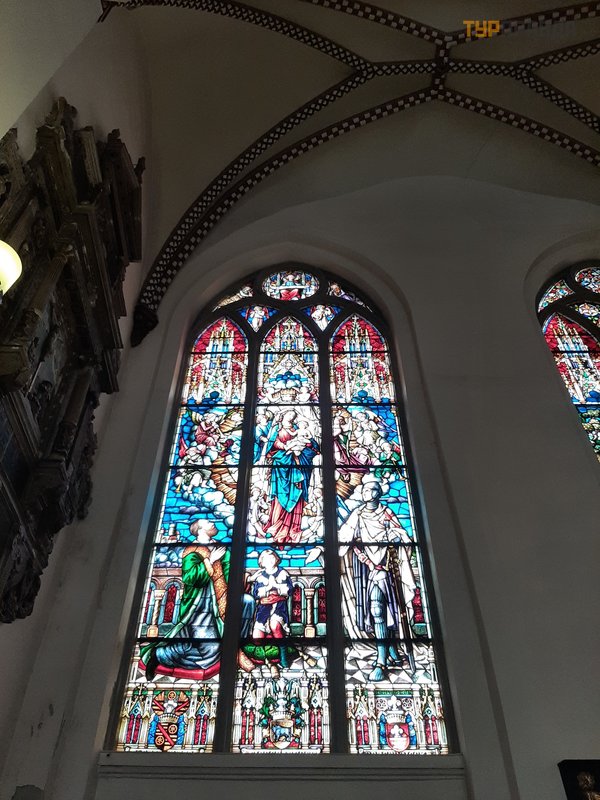
На одном из витражей в настоящее время можно видеть Мадонну с младенцем на руках и представителей рода Тизенгаузенов. Также на витражах изображены епископ Альберт и первые строители Домского храма.
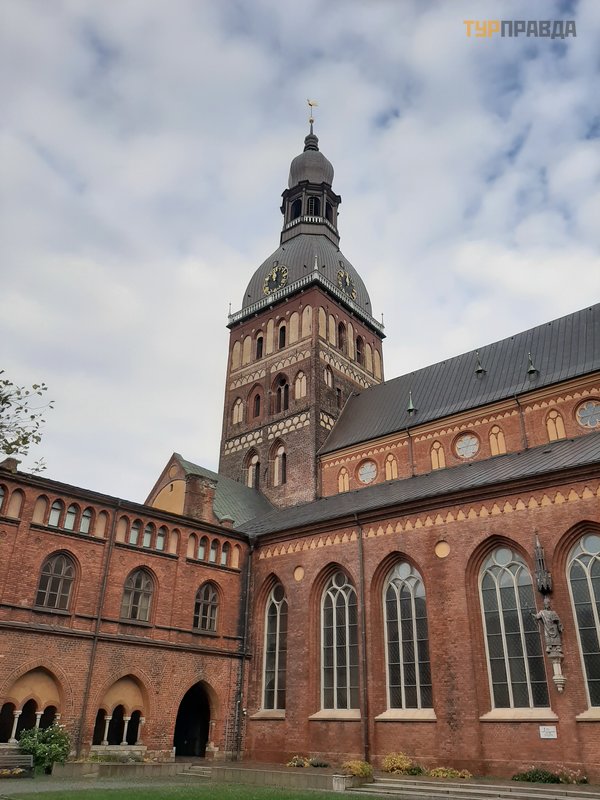

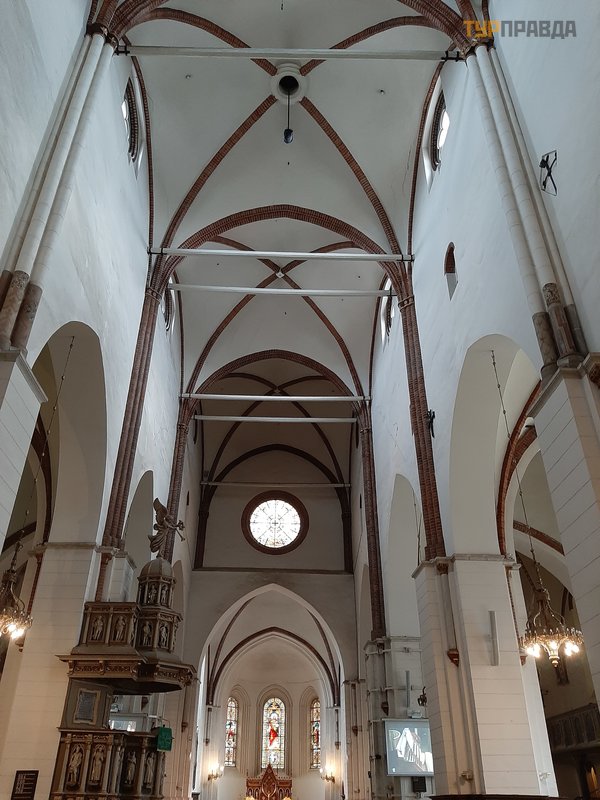

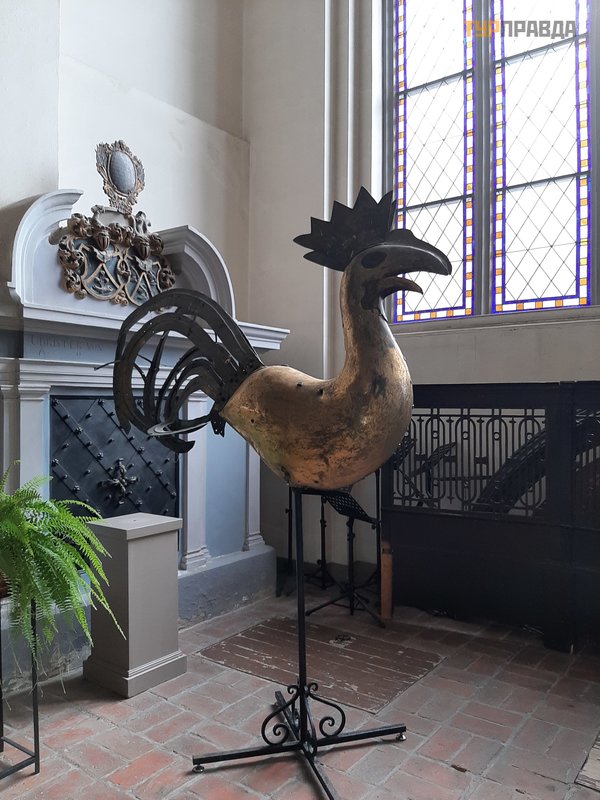
Обойти Домскую площадь можно через кишащие вокруг узкие улочки, маленькие дворики, не повторяясь заходя и выходя с площади все через новые переулочки и калитки.
Например, за Собором Святого Петра находятся небольшие дворики Конвента сета и Яна сета. Оба дворика являются памятниками архитектуры и достопримечательностями Старого города.
Эти два очаровательных дворика находятся рядом друг с другом так, что из одного дворика можно пройти в другой. Разделяет их невысокая стена с арочными воротами.
Центральный вход во двор конвента расположен прямо напротив памятника бременским музыкантам.
По своим размерам подворье Яна небольшое, намного меньше двора Конвента. Имеет два входа, не считая проход, соединяющий его с двором Конвента.
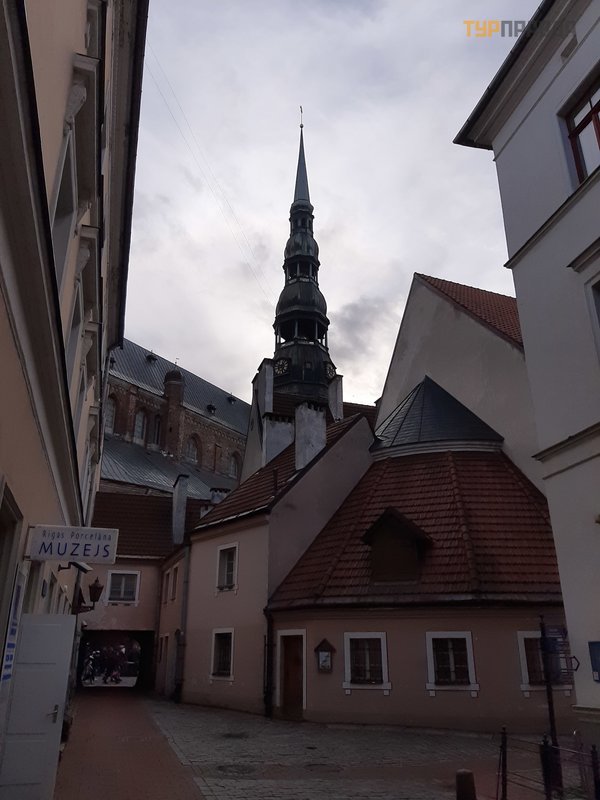
Тут можно пройти через арку и если обернуться, то можно увидеть на здании храма флюгер в виде фигуры Святого Петра, держащего в руках ключ от рая.


Пройдя во внутрь окунаешься в атмосферу уюта жизни Риги, начиная от ее основателей, например, можно увидеть, как сообразительные рижане выходили из ситуации после введения налога на окна – оконные проемы закладывали и поверх них просто рисовали окна на стенах домов, а за нарисованные окна платить налог не надо!
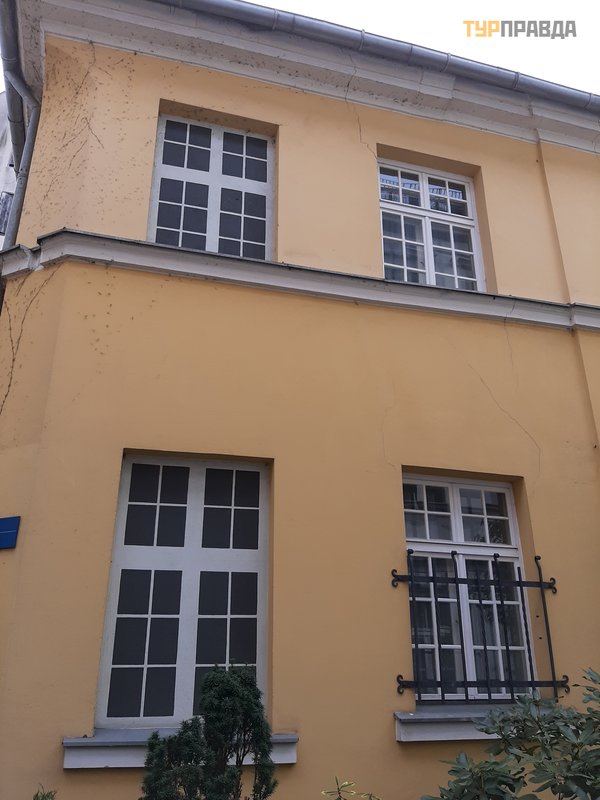
Интересно, те рижане, что догадались, случайно были родом не из Одессы ли?
Ответ, на 99%, что неслучайно, а специально, хе-хе!
Тут же можно найти лавку-музей янтаря, где есть комната, убранство которой, включая всю мебель, светильники и камин созданы из различных сортов янтаря, даже пол и тот выложен аккуратно подобранными пластинами из янтаря, всего килограммов 650.
Хм, почти стихи получиличь...
Ну да ладно, идем, дорогой читатель, дальше!



Среди этих зданий есть один из входов в бар Riga Black Magic, имеющий уникальное оформление и атмосферу волшебства, даже, говорят, колдовства.

Бар Riga Black Magic небольшой, в нем подают кофе, чай, различные конфеты, пирожное, торты, рижские бальзамы всех сортов и мастей, а также делают множество различных напитков на основе знаменитого Balsam Rigas Black (черного рижского бальзама). В баре можно продегустировать каждый бальзам и, если понравится, купить бутылочку-другую. Цены на бальзамы в бутылках дороже, чем на те же бальзамы в магазинах Риги. Если вас будут заверять, что это единственные натуральные бальзамы в городе, а в магазинах бывают подделки, не верьте, это просто уловка, бальзамы что в этом баре, что в супермаркетах или на рынке абсолютно идентичны, завозят их с одного завода.

На экскурсии вам расскажут об истории бара, потайных комнатах, в которые можно зайти через книжный шкаф, потянув за статуэтку, об алхимиках и тайных сообществах. Все интересно. Также здесь можно приобрести, кроме рижского бальзама, и новый продукт – самогон на меде.
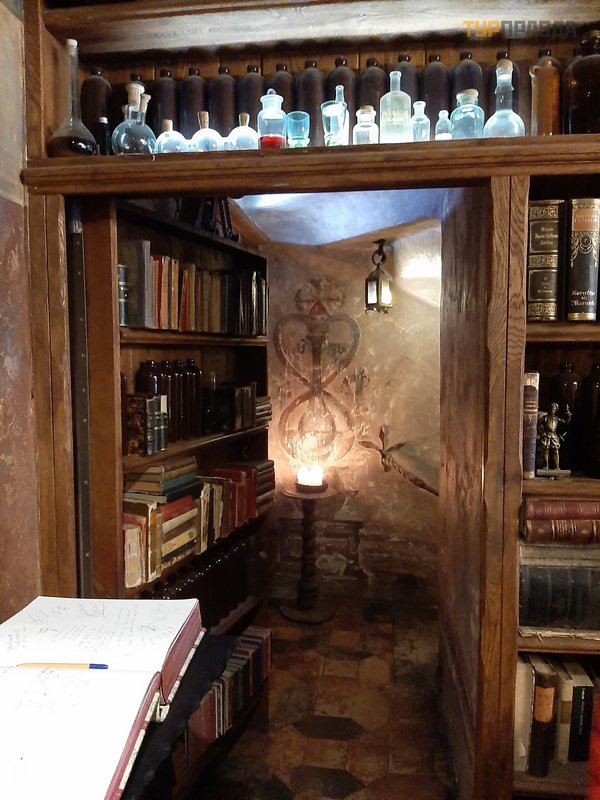


К слову, можно честно признаться, что мы и сами втянулись в употребление рижских ликеро-водочных сувениров, но, скорее-всего, из-за погоды: было пасмурно и дождливо, грустилка какая-то, а потом все такое становилось розовым, точнее классическим или черничным, по типу бальзамов!
Другой вход-выход из бара выходит прямо на улицу и очень интересно оформлен. Изогнутое стекло – это не только связано с названием бара, что, мол, он волшебный, но это и дань традиции – так выглядели оконные стекла, когда их только стали производить, и говорят, что оконное стекло на выходе из бара на улицу – это не простое оконное стекло, а хрусталь!

Далее проходя по улицам Старой Риги надо обязательно внимательно осматривая как здания, так и сопутствующее оформление, например зарытые дулами вниз в землю пушки, которые якобы приказал закопать сам Петр I со словами « Чтобы не было войны» , и проходя через сквозные парадные домов с оригинальным решением подачи дневного света через так называемые световые колодцы, которых в Риги вроде бы всего два.



Кстати, фигура на фото - это произведение искусства « Гондола» всемирного известного Российского художника Дмитрия Гутова.
11-метровая « Гондола» - это застывший взрыв настоящей Венецианской гондолы: и пространственно, и линеарно понятное, читаемое послание, как и все работы знаменитого художника. Это созданная из хаоса взрыва вселенная художника – упорядоченный мир культуры. В нем нет ничего лишнего, его форма ясна, потому что в мозгу художника есть ясность происходящего.
По восприятию рузультата этого современного вида искусства, вроде как, художник взял да и взорвал гандолу динамитом, а потом собрал ошметки и восстановил момент самого взрыва, что символизирует, может быть, Великий взрыв во Вселенной, а может просто надоела ему эта гандола, мол, места много занимает: ни велик на балконе не поставишь, ни фикус к окну не сдвинешь и входная дверь в кваритру на закрывается: весло мешает...
Также нужно обязательно посмотреть три дома, которые называются « Три брата» .
« Три брата» – это архитектурный комплекс, расположенный в центре Старой Риги на улице Маза Пилс (Малая Замковая). Характерный образец архитектуры средневековой Риги.
Что касается оригинальности этого ансамбля, так это то, что в непосредственной близости находятся три здания, которые отображают не только достижения в архитектуре или присущей той эпохе стиль, когда они возводились, но они еще и указывают на изменения, например, в требованиях по оплате налогов за ширину земельного участка, на котором стоит здание, или на количество дверей, что наглядно привело к изменению самой конструкции последующих зданий, построенных позже более ранних.

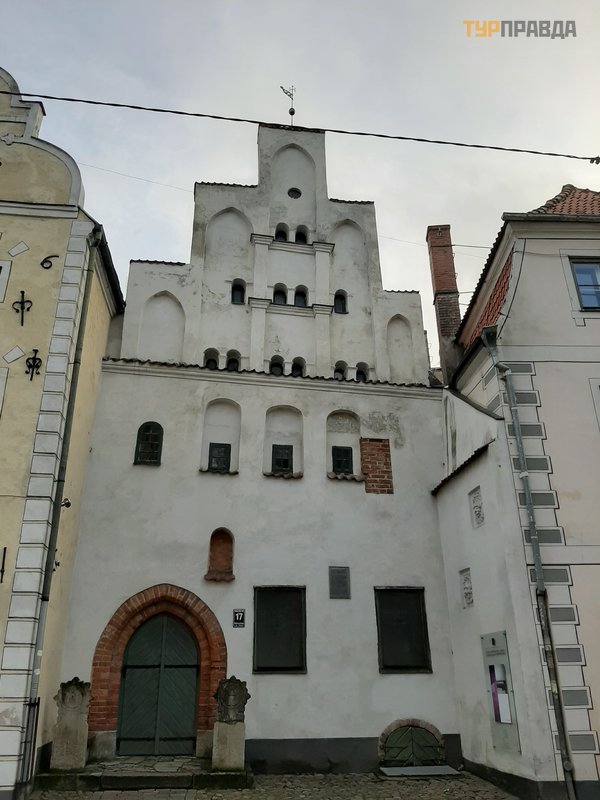


Гуляя далее, можно сходить на площадь Ливов и посмотреть на Кошкин дом.
Чем интересна эта площадь – то, что была создана на месте сноса части городской постройки, которая была разрушена во время Второй мировой войны.
Оформление самой площади, а именно: волны в виде рассаженных кустарников и цветов, а также волнистых скамеек символизируют волны протекающей здесь когда-то реки.
По границе площади находится комплекс очаровательных жилых зданий XVII века.


Тут же кроме зданий Малой и Большой гильдий вы сможете уже видеть Кошкин дом. Ну кто не слышал про Кошкин дом в Риге?

С этим домом, а точнее черным котом на шпиле здания, связана одна очень интересная история. Один богатый домовладелец Блюмер (Плуме), очень хотел стать членом рижской Большой гильдии, но ему всё время отказывали в членстве. После нескольких отказов он очень осерчал, и решил устроить акт возмездия. Заказал скульптурные изображения чёрных котов с выгнутыми спинами и поднятыми вверх хвостами и поместил их на остроконечных башенках своего доходного дома, расположенного прямо напротив здания Большой гильдии, да так, что коты эти были повернуты хвостами в сторону окон рабочего кабинета старейшины Большой гильдии. Старейшине данная выходка очень досаждала и против Блюмера был затеян судебный процесс. Однако юридическими мерами не удавалось добиться от Блюмера того, чтобы котов развернули мордами к гильдии. Суд вынес следующее решение: коты – это существа, гуляющие сами по себе, они свободные животные и как хотят, так и сидят. С Блюмером пришлось заключить мирное соглашение, его, в конце концов, приняли в гильдию, а коты были развернуты правильным ракурсом к Большой гильдии.
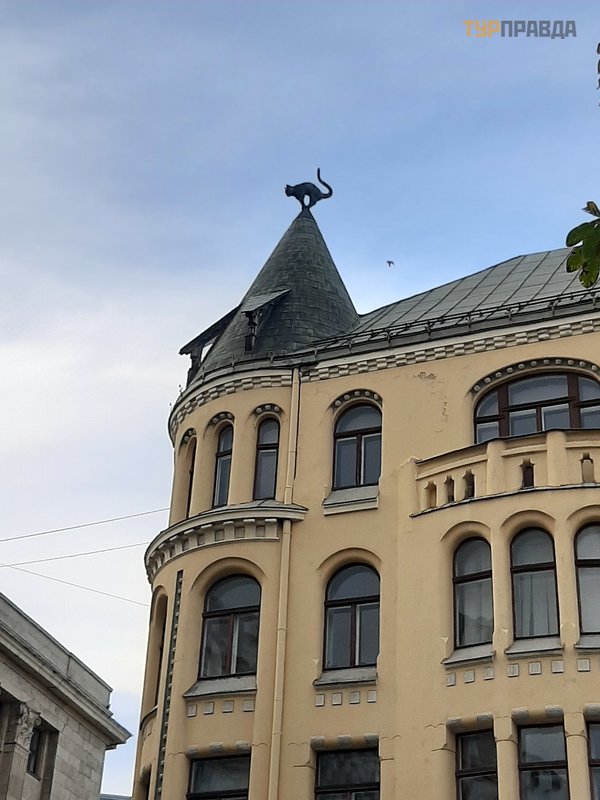
Также интересно то, что на доме не один кот, а два, на каждом углу фасада здания, смотрящего на здание Большой гильдии.

Также обязательно надо дойти до Ратушной площади.
Ратушная площадь – это красивейшая площадь Старой Риги и её старейший культурно-репрезентативный центр. Изначально на месте современной Ратушной площади, которую можно видеть в настоящее время, находился городской рынок. На базар стекались купцы со всей округи, привозившие товары для торговли. Исходя из прямого назначения площади, многие годы площадь называли Рыночной. Она служила не только торговой точкой, но и административным ядром города.


Со временем площадь развивалась и расширялась, ей придавалось все большее значение. В последующем богатые немецкие купцы стали скупать участки земли на площади и строить на этих местах богатые дома. На протяжении всего периода Средневековья на площади проходили карнавальные шествия, гвардейские смотры, городские состязания на звание лучшего защитника города и прочие городские праздничные мероприятия. Основным объектом площади стала городская Ратуша, в честь которой и была названа площадь.
Ратушная площадь сама по себе легендарна, однако её культовым зданием является Дом Черноголовых. Именно из-за этого знаменитого дома на площадь стекаются сотни туристов.

Своё название Дом Черноголовых здание получило потому, что в конце XIII века существовало Братство Святого Георгия, в которое принимали молодых, неженатых иностранных купцов. Первоначально патроном братства был Святой Георгий, покровитель рыцарей и воинов, позже стал Святой Маврикий, чьим символом была чёрная голова, нашедшая свое отображение в гербе Братства. Именно так за Братством закрепилось имя Черноголовых. Братство Черноголовых занималось закупкой и доставкой товаров в Ригу, позже они создали в Риге компанию Черноголовых. В 1477 Черноголовые арендовали помещение в верхнем этаже Нового дома у Рижского магистрата. Ранее дом Черноголовых назывался Новым домом. Постепенно члены братства вкладывали деньги в украшение и перестройку здания. Так за домом закрепилось его прежнее название – Дом Черноголовых.
Ещё одним узнаваемым и известным символом Ратушной площади является статуя рыцаря Роланда.

Статуя Роланда установлена в самом центре площади и являет собой символ свободы средневекового города. В настоящее время оригинальная гранитная статуя последнего рижского Роланда хранится в музейной экспозиции церкви Святого Петра. На площади же установлена её копия.
Причем это не только памятник, но и фонтан, точнее источник питьевой воды – у подножья памятника размещен кран. Сейчас вода будет течь только если провести рукой – установлен фотоэлемент.
Также гуляя по Старой Риге обязательно нужно найти здания, которые были увековечены в кинематографе.
Например, можно найти тот самый дом № 221б по Бейкер-стрит из фильмов Игоря Масленникова о приключениях Шерлока Холмса и доктор Ватсона.

Сразу напротив можно заглянуть в зоомагазин, где в фильме « 17 мгновений весны» советский разведчик Максим Максимович Исаев, настоящее имя Всеволод Владимирович Владимиров, он же штандартенфюрер СС Макс Отто фон Штирлиц, осматривал живность (птиц в клетках), а напротив, через улицу, находится дом с явочной квартирой, куда был согласно сюжету фильма направлен профессор Плейшнер.

Получается улица Яуниела, она же Блюменштрассе, она же Бейкер-стрит!
Вообще, в Риге снималось немало фильмов, кроме указанных про приключения Шерлока Холмса и доктора Ватсона или « 17 мгновений весны» , а также « Секретная миссия» , « Убийство на улице Данте» , « Старомодная комедия» , « Идеальный муж» , « Щит и меч» и « Стрелы Робин Гуда» , « Узник замка Иф» и другие.
Да вообще, много чего интересного можно посмотреть в Старой Риге!

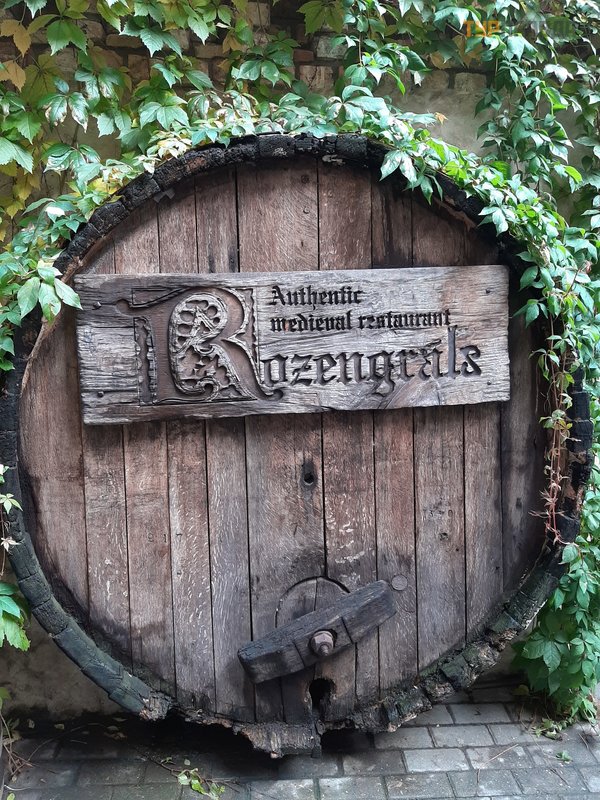
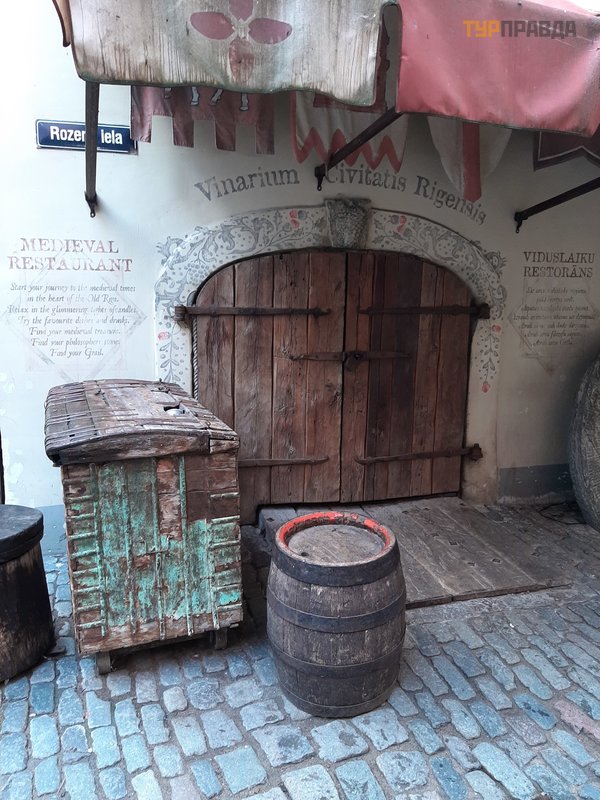
Ужинать рекомендуем в Рижском винном погребе (средневековом ресторане « Розенграль» ), который расположен на пересечении улиц Розена и Краму (Мелочного переулка) недалеко от улицы Тиргоню (Купеческой).

Средневековые интерьеры воссозданы в точности по историческим документам: кирпичные своды, балки и так далее. Освещение, естественно, только свечи, официанты одеты в средневековую одежду, а на входе гостей встречает швейцар в рыцарских доспехах.
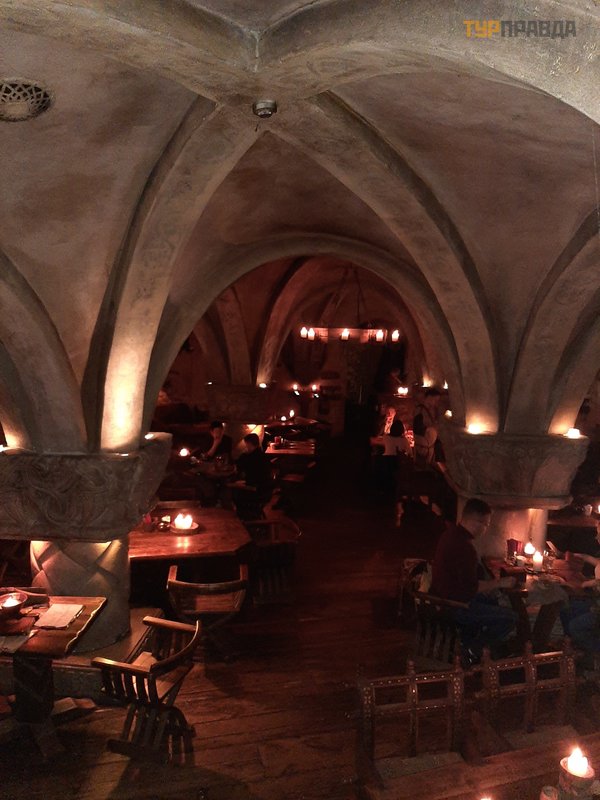





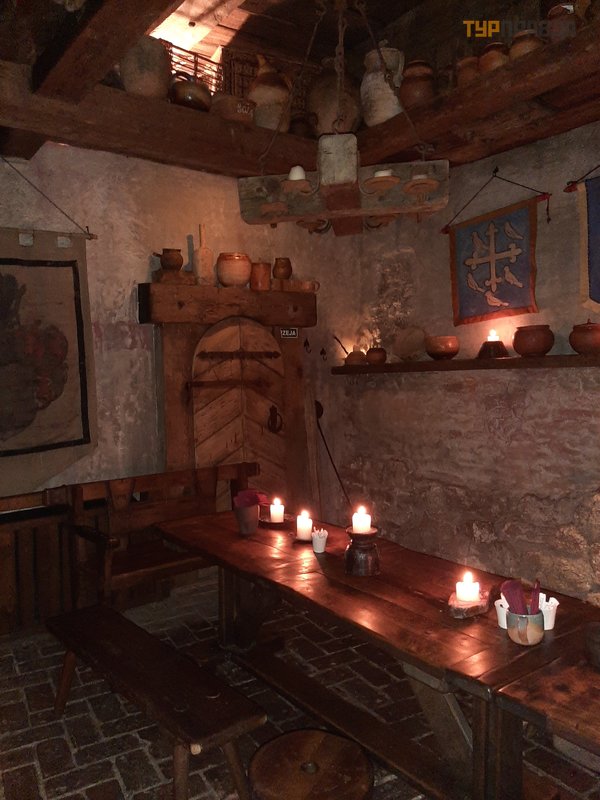

Меню ресторана тоже выдержано в стиле средневековых традиций: копченая оленина, тушеный в черносливе кролик, поросенок на вертеле по старинному рецепту и, разумеется, тщательно разработанная винная карта.

Ужин нам очень понравился, особенно безалкогольные морсы, говорят, тоже по старинным рецептам.
Также очень понравилась подача хлеба или хлебных булок, которые завернуты в мешковину (мы не все съели, часть взяли с собой в дорогу).
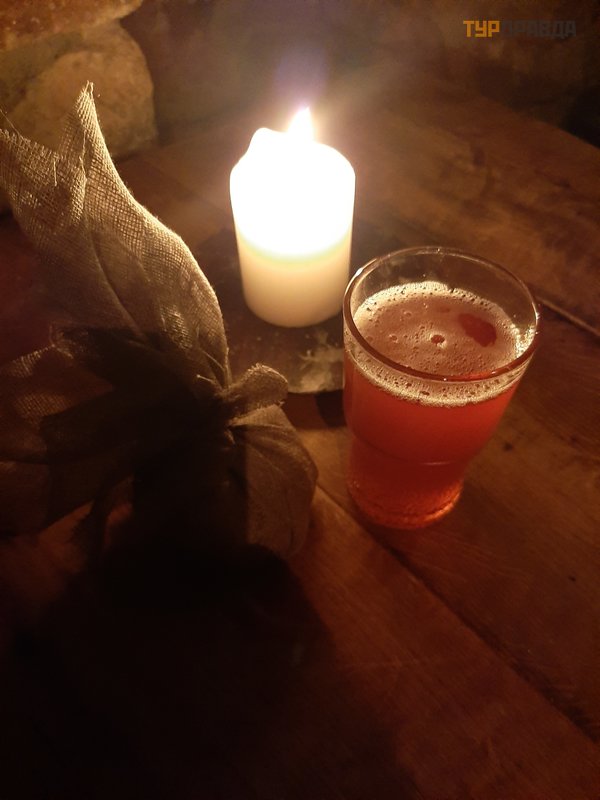

Сразу говорим: Wi-Fi в ресторане нет. Д и какой может быть Wi-Fi в XIII веке, а?
СОВЕТ: при наплыве туристов в ресторан можно попасть только по предварительной записи, постоянно нет свободных мест. Также советуем сесть на проходе – в подземелье не очень хорошо с вентиляцией и может быть немножечко душноватенько.
Да, к слову, не забываем свои кофточки Zara, чтобы потом ни на кого не думать.
И еще: отдельные официантки могут хамить, нам хамили, но не будем к ним строги, может, уж сильно вошли в роль простолюдинов, кто знает…
Ну, а если вам не хватит дичи, поданной в ресторане, вы можете попытать счастья – добыть что-то самостоятельно.
Удовольствие недорогое – 2-3 евро за набор стрел.
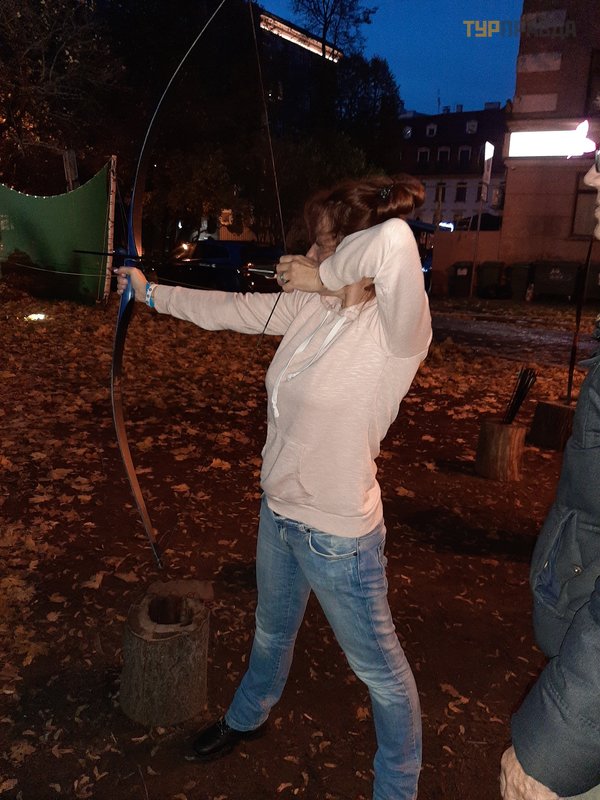
Кроме указанного места, можно сходить еще на Центральный рынок Риги и в Музей янтаря.
Первое мероприятие – вход бесплатный, а в музей придется платить за вход.
Рынок находится возле Ж/Д вокзала. Недалеко.
Не забываем держать карман шире, то есть, как говорит Карлсон, « О, брат! Это жулики. » . Напоминаем: воруют!
Центральный рынок в Риге – ? один из старейших и крупнейших рынков в Европе, отличающийся оригинальной конструкцией павильонов. Площадь рынка – 5.7 га. Рынок представляет собой несколько крытых павильонов, между которыми также располагаются лавки как с сырыми продуктами, так и уже готовых к употреблению.


В октябре было изобилие грибов и вязаных носков.

СОВЕТ: чтобы довезти домой готовую рыбу холодного или прочего копчения, на рынке есть услуга вакуумирования покупок.
Стоимость – 2 евро, если купили не у этого продавца, и 1 евро – если покупка совершена тут же, где оказывают услугу.

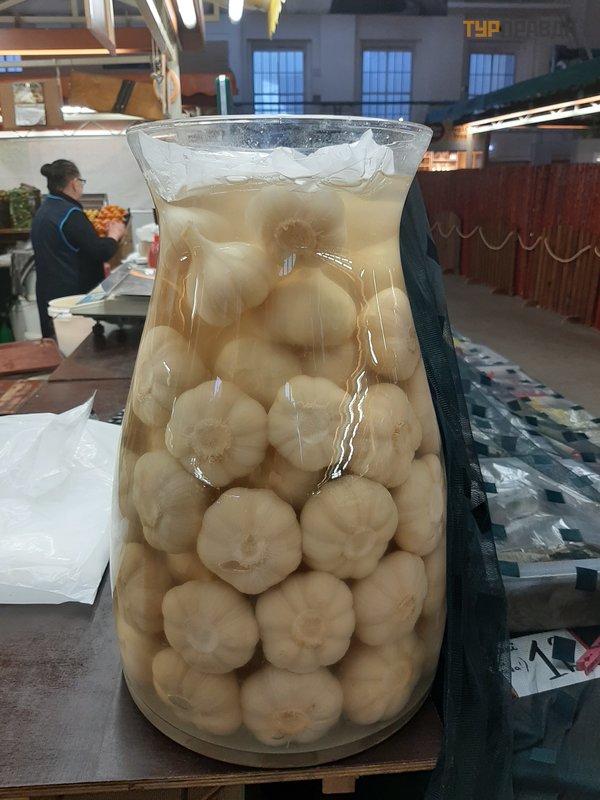


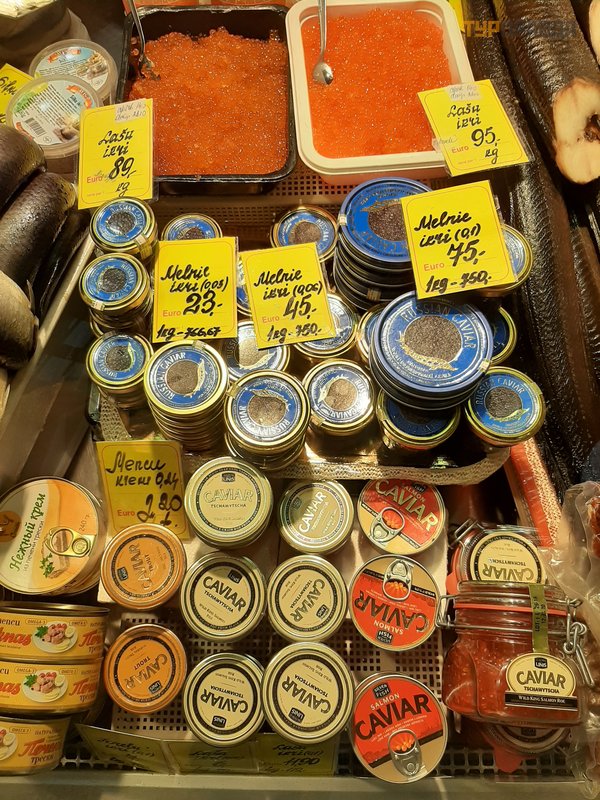


Кстати, с кулечками на рынке реальная проблема. Не знаем почему. Когда были мы, кульки реально были « левые» : неудобные и не те, что мы привыкли, а потом вообще разлезлись и превратились в лохмотья, чуть все покупки не растеряли.
Вообще, с кульками в Риге тоже проблема: в магазине отдельно спрашивают, будете ли брать кулек, например при покупке вязаного пальто.
А как его нести-то?
При этом речь о скидке вообще не идет, а кулек купить – будьте любезны!
СОВЕТ номер два: на рынке есть бутик с алкоголем, где можно купить по самой малой цене, что мы нашли в Риге, тот самый Рижский бальзам. Кроме того, тут также можно купить крепленое латвийское вино в оригинальной упаковке – мини-бутылки по 50 граммов.
Читателям прочих отзывов также рекомендуют купить знаменитый сыр. Мы купились и купили. Причем тот, что купили на рынке и съели пока ехали в электричке – вкусный, а тот, что купили домой привезти, наверное, по вкусу как кульки на этом рынке.
Еще советуем сходить в Музей янтаря, только кроме того, что находится во дворе Конвента, еще дополнительнл в тот, что находится на втором этаже ювелирного магазина Amber Queen в центре города.
Здесь вы увидите фрагменты янтарной комнаты, уникальные куски янтаря, очень редкие инклюзы, большую коллекцию антикварных изделий из янтаря.

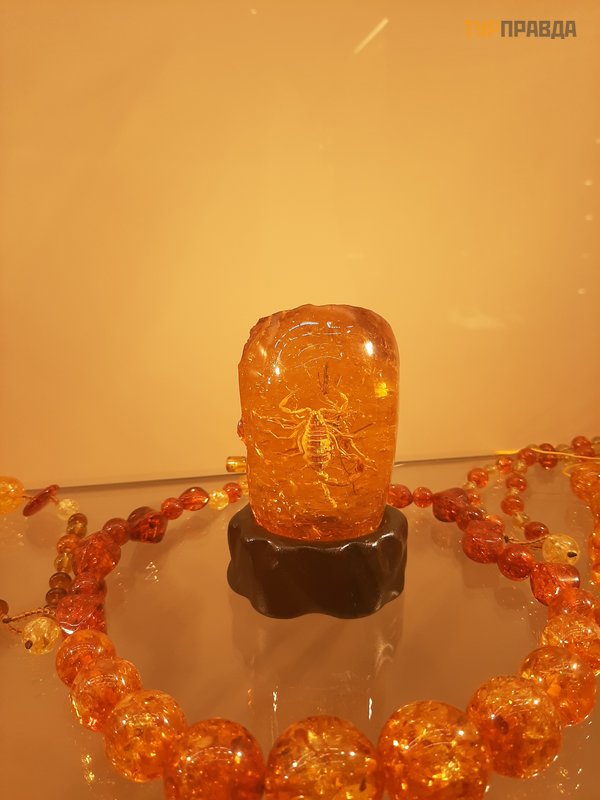








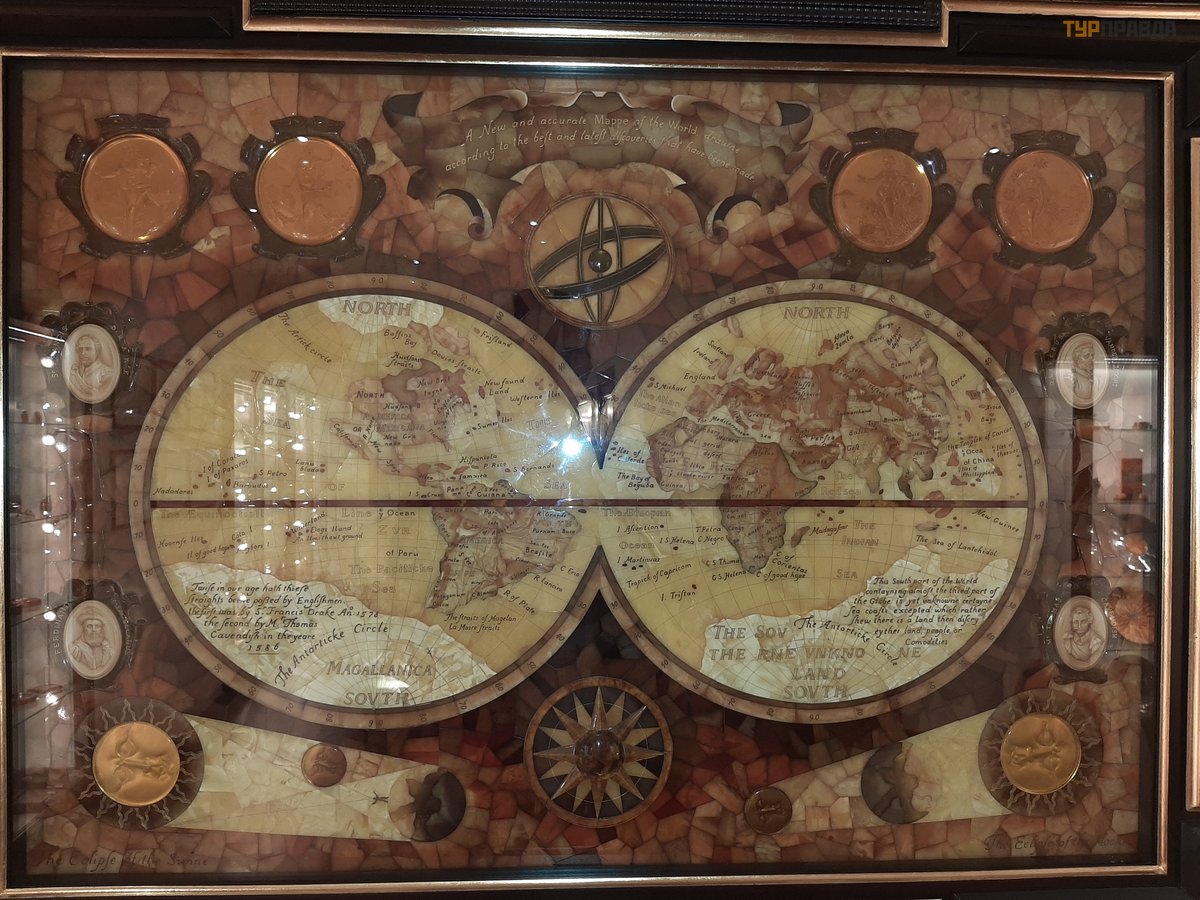
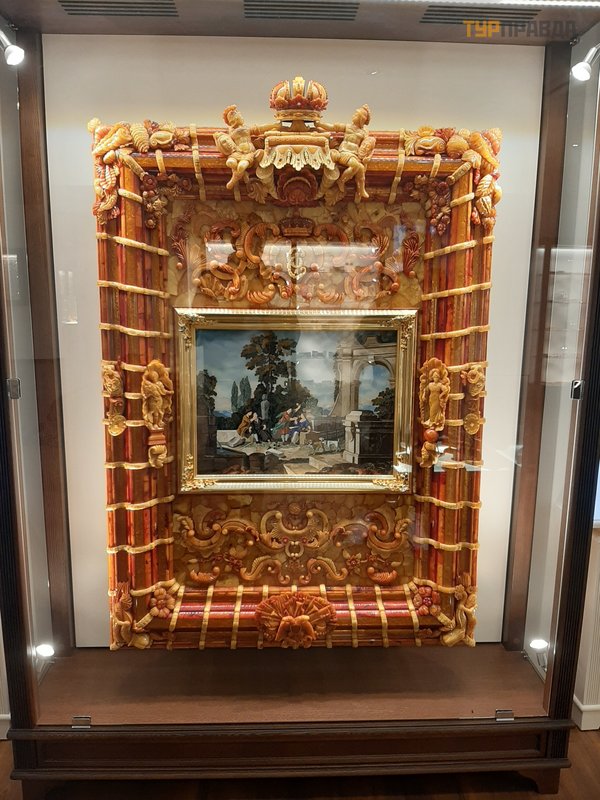


Прочих развлечений в Риге мы не нашли и решили съездить в Сигулду.
Про Сигулду очень хорошо написано в Wikipedia, мало что добавишь:
- национальный парк
- канатная дорога
- Турайдский замок
- Сигулдский замок.
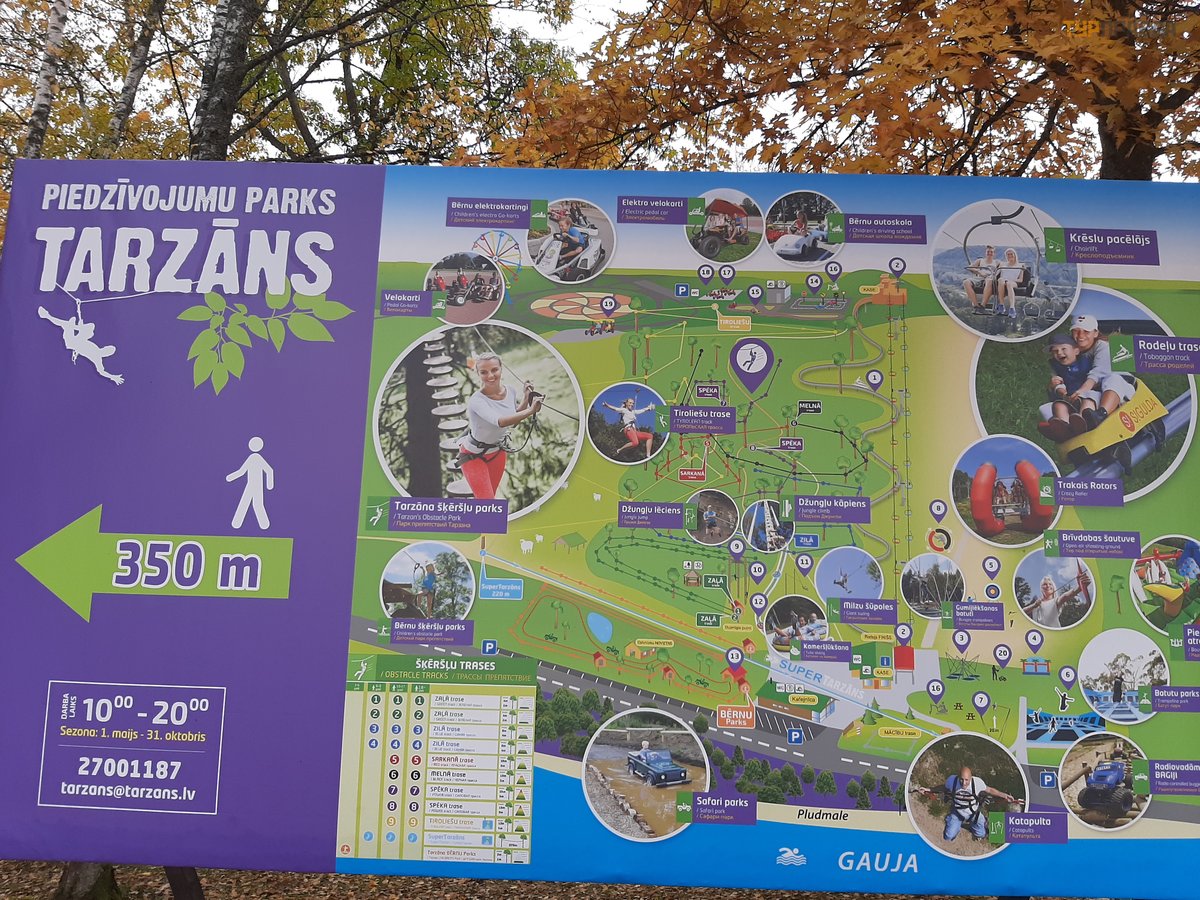
Ну и всякие санно-бобслейные трассы, велосипедные и пешие тропинки. Небольшой парк аттракционов. Кафе.
Ехать можно, может, и лучше на электричке – удобно, есть wi-fi, скорость движения невысокая, можно спокойно по пути следования все рассмотреть и старушки с корзинками ягод и грибов легко запрыгивают и успевают спрыгивать на остановках. Такая пенсионная электричка – это, детка, не трамвай в Стамбуле!
И красота природы – очень красиво и все такое природное!



Красота природы Сигулды настолько нас отвлекла, что мы даже не замечали усталости (нам почти каждый прохожий в Риге, с кем говорили, и кто узнавал, где мы уже были и куда собираемся, советовал съездить в Сигулду, но добавляли, что там еще красивее, когда цветут цветы, но хотя сейчас и холодно, съездить все равно надо).
Ну мы доверчивые и поехали.
В здании вокзала, при выходе направо, сразу можно зайти в мини-супермаркет – выпить кофе или докупить пропитания.
Городок очень чистый и аккуратный.



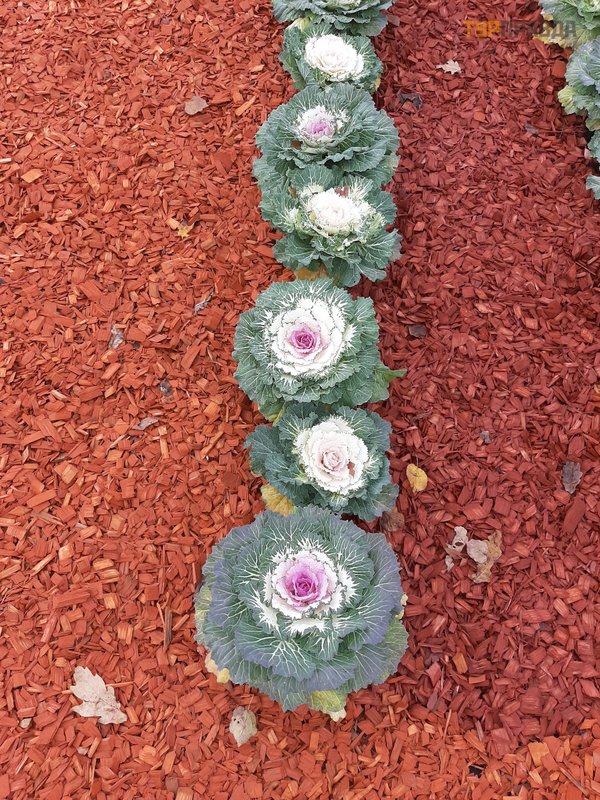
В небольшом ставке перед церковью стадо или что там у них, стая, уток – чтобы покормить, если нет с собой припасов, хлебушек можно было купить в магазине на вокзале Сигулды.




При поездке на канатной дороге в самой Сигулде и потом осматривая развалины крепости, если идти, например, по правую сторону от канатной дороги, то тропинка вас выведет из лесу, потом будет луг, потом по запаху еды можно найти неплохую кафешку. Обед будет достаточно плотный и совсем недорогой. Присесть также можно на улице или возле кафе, либо чуть в глубине дворика в кругу дубов великанов и зарядиться от них природной энергией.


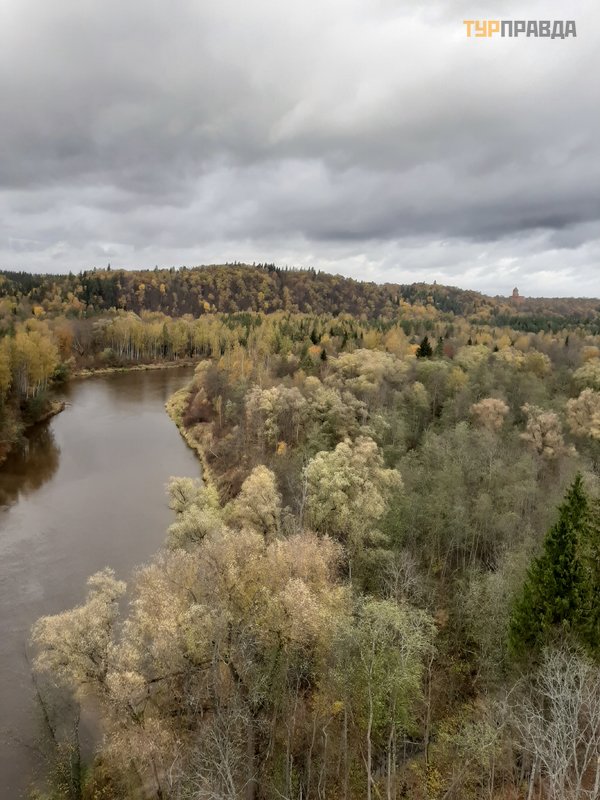
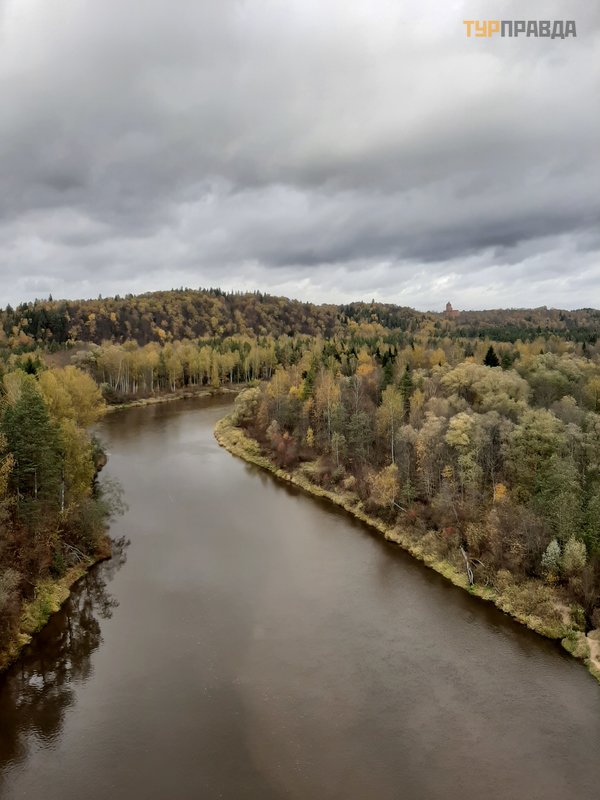



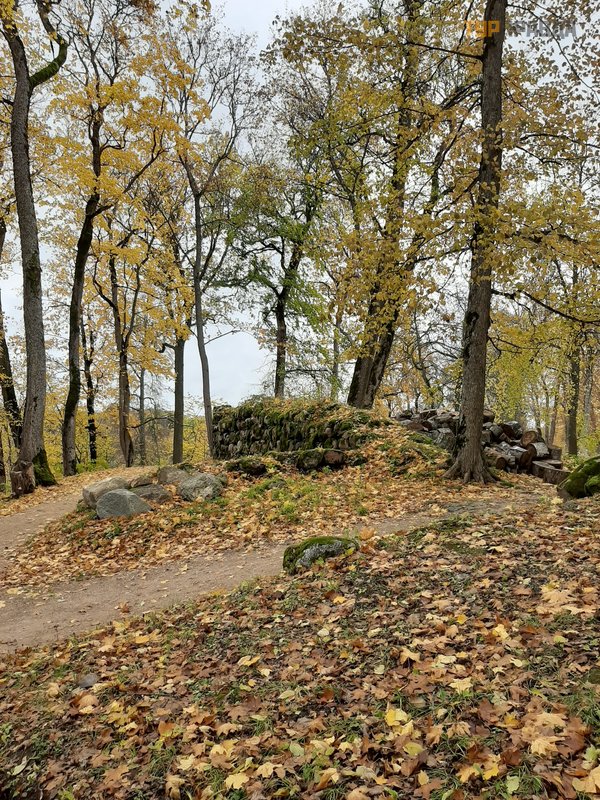
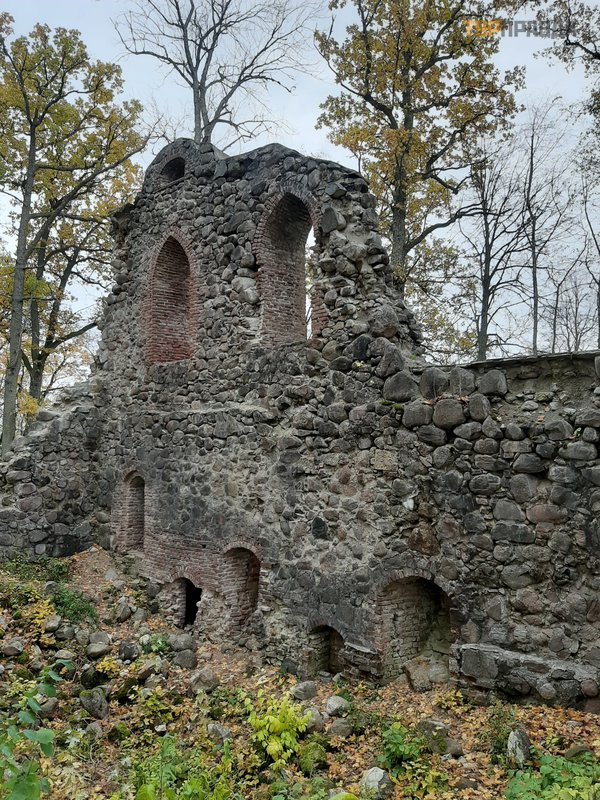

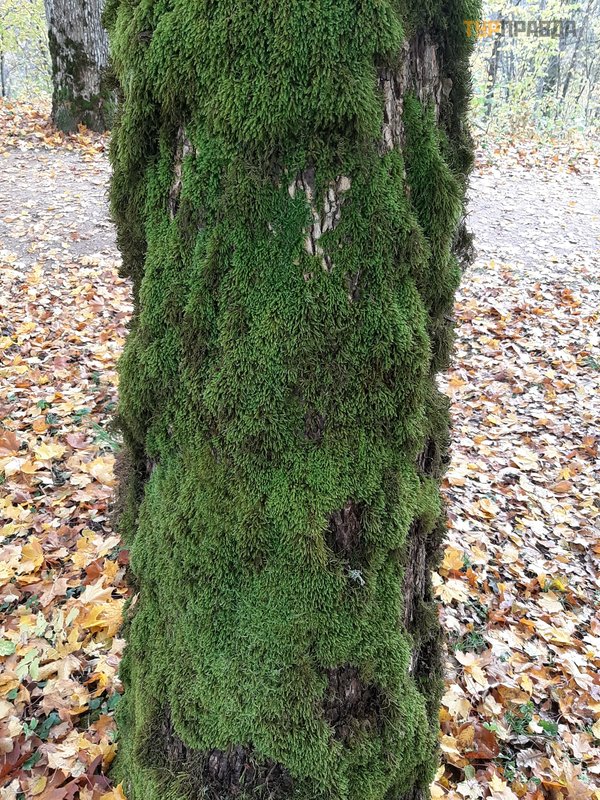


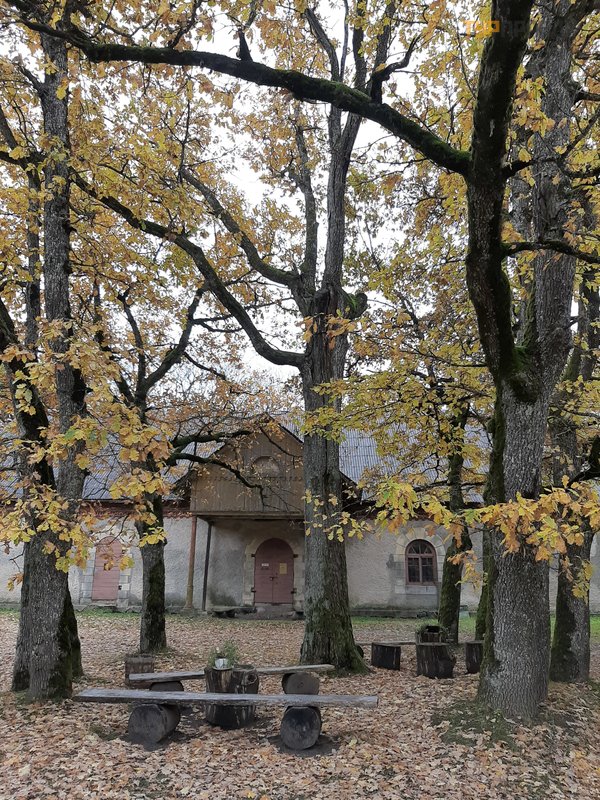
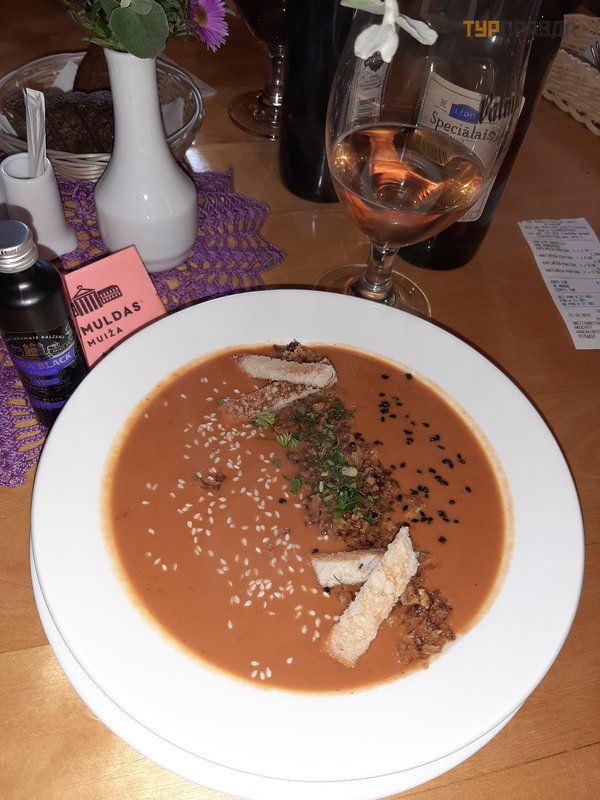
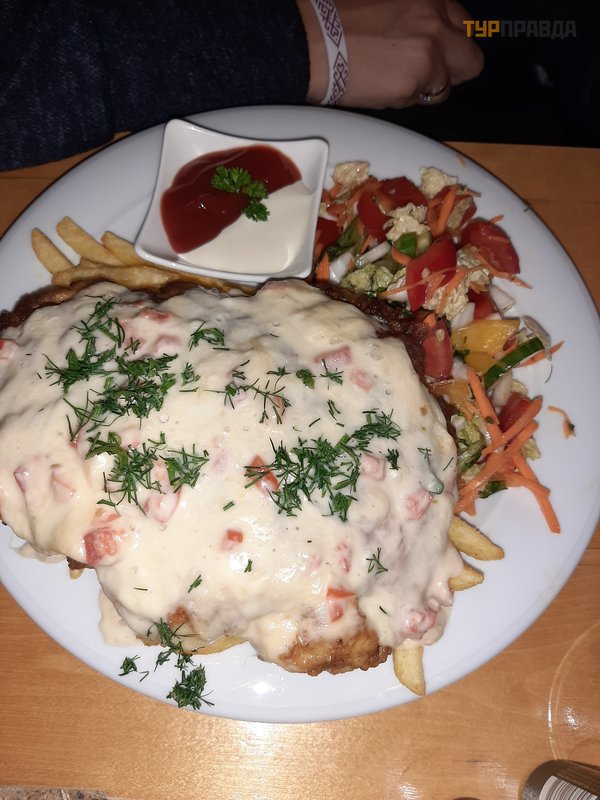

За дополнительные деньги (что-то около 50 евро с человека) на канатной дороге сверху холма можно прокатиться на неким подобием крыла, скользящего над пропастью по тросу канатной дороги, и когда вагончик будет вас возвращать назад в парк, эти летучие летуны через специальное приспособление упрутся в крышу кабины и кабинка будет толкать их вверх подъема, а экстрималы будут болтаться перед передним окном кабины фуникулера, пока вы поднимаетесь в гору. Мы им махали. Они нам в ответ. Весело было первые две минуты. Потом ехали спокойно. Ждали, когда их снимут уже.



Также возле колеса обозрения в парке можно съехать вниз холма на одиночном вагончике, скользящим по монорельсу, притормаживая на поворотах ручным тормозом. Стоимость 3 Евро. А еще за 2 Евро вам предложат ваше фото, когда вы спускались вниз. Фото огонь! Мы купили. Возвращение на подъемнике назад на вверх холма бесплатно, не то что кулечки в магазинах и на рынках.

Гулять по окрестностям Сигулды достаточно легко – везде указатели, да и Google map работает, не заблудитесь.
Куда еще нам удалось попасть в Латвии, так это в Юрмалу.
Добираться также советуем на электричке.
Первое впечатление от Юрмалы при выходе из электрички – это жуткая информация о количестве погибших на остановке с указанием возрастов и их черными профилями в полный рост – кошмар.
Идем гулять.
Ну что же, вот оно какое, Рижское взморье!
Рижское взморье – историческая курортная местность между южным побережьем Рижского залива и рекой Лиелупе. Лесистая полуостровообразная местность, имеющая в ширину до 3 км, в длину 19 км. К востоку от взморья – город Рига (в 18 км), к западу – Курземские леса. В середине XX века вся территория взморья была объявлена городом под названием Юрмала (« взморье» ).



Нам понравилось, правда, Лайму Вайкуле не встретили и янтарь на побережье не отыскали, зато налюбовались прекрасным парком и посмотрели на всевозможные варианты кто и на какой бюджет может строить дачи.

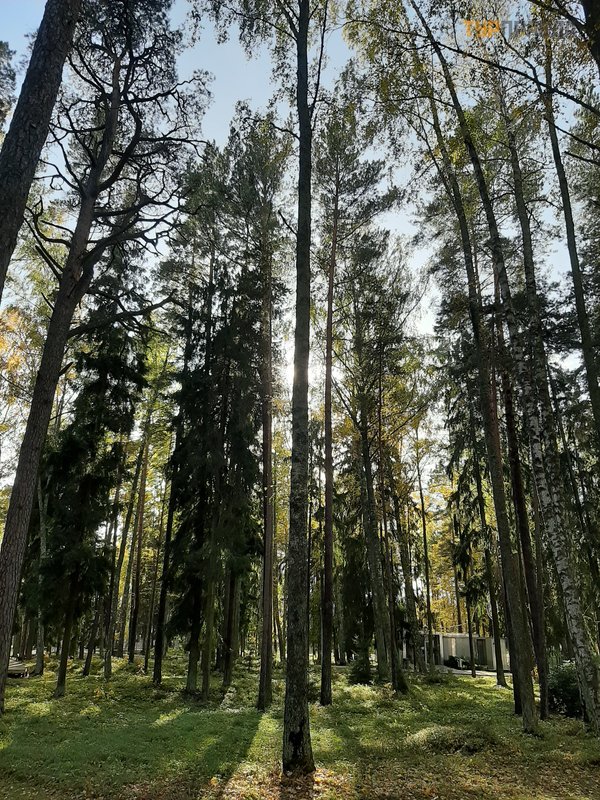

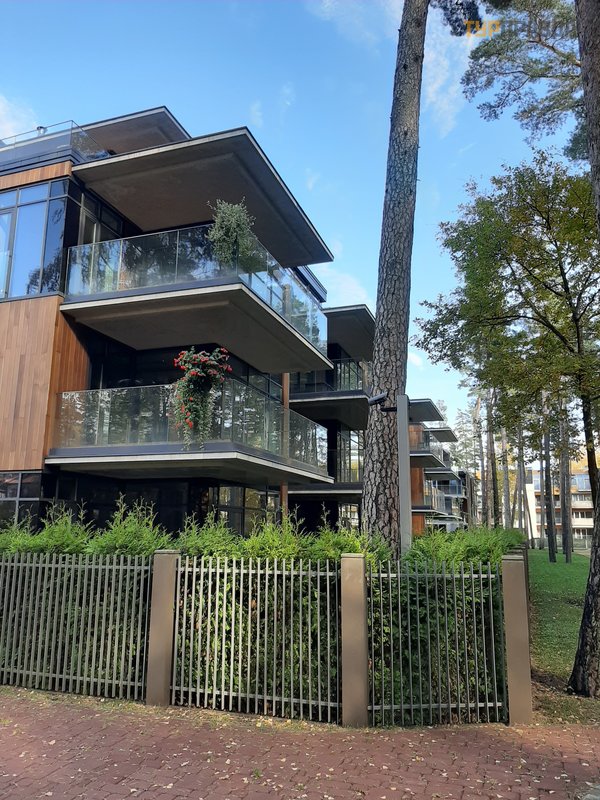
Отдохнули, в общем.
Тут даже не знаем, что можно посетовать или куда сходить, возможно, можно просто приобретите себе что-то оригинальное на память, например шапко-шарфы в одной из лавок, как это сделали мы.

Возвращение назад.
Аэропорт и tax free.
Вот тут после фотосессии возле боба участника олимпиады расслабляться не надо и перед проходом паспортного контроля нужно набраться олимпийского терпения и дождаться таможенника, который вам оформит бумаги на возврат оплаченных налогов в Латвии. Иначе после прохождения контроля вернуться к нему назад будет невозможно. Потом с такой же сноровкой найти работающее представительство (мини-офис) платежной системы и дождаться ее открытия, чтобы оформить полисы возврата налогов (tax free). На месте, естественно, ничего возвращать не будут, но у вас же могли быть достаточно дорогие покупки.


Вот, например, что можно и может быть нужно прикупить в Латвии, так это вязаные пальто или куртки, которые почему-то продаются, например, в Риге в магазинах сувениров. Мы много читали, какие сувениры, кроме янтаря, можно привести из Латвии, и узнали много лестных отзывов о вязаных шерстяных вещах. Цена одного изделия больше 100 евро – точно имеете право на возврат налогов (tax free). Также, например, в Юрмале продаются очень хорошие меховые зимние сапоги ручной работы по цене от 140 евро – опять можно оформить tax free. Ну и конечно ювелирка с янтарем – тут от 5-10 евро и вверх до совершенства.
ОБЩЕЕ ВПЕЧАТЛЕНИЕ о путешествии в Латвию: 4 (ХОРОШО), один раз съездить можно.


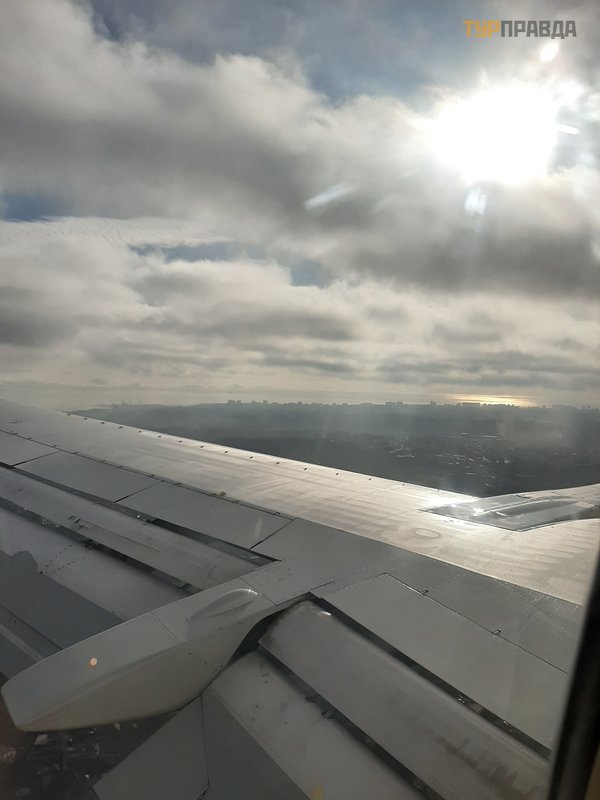
На этом всё!
Спасибо всем!
ВАЖНО: оценка Отдыха зависит от оценки Отзыва!
Dear friends!
Speaking about our trip to the Republic of Latvia, I immediately want to say that this is the only time when we already wanted to go back home during the trip.
That is, as usual: the day before the end of the vacation you start to whine, I wish I had two more days and three hundred bucks. And then: well, when is it home already?
On the other hand, to each his own.
So, the flight from sunny Odessa towards foggy and rainy Riga is already very well displayed by photos directly from the window of the plane, so there are so many of them.





Frankly, the weather in Latvia was not something new for us, we even planned to buy umbrellas there, if anything, and we took raincoats with us - cheap and convenient. They don’t take up much space - we flew without luggage.
As you know, the climate of Latvia has a transitional character from maritime to continental, which is softened by proximity to the Baltic Sea. The prevailing southwesterly winds bring a significant amount of precipitation from the Atlantic. The sky is often covered with clouds, the number of sunny days is only 30-40 per year. The sunniest and driest month is May, and we were in mid-October. Winter lasts from mid-December to mid-March.
Therefore, before winter began, we decided on the weekend in October to see what kind of Baltic it is and, of course, there was a selfish, or rather jewelry interest - well, at least if you don’t find a sun stone on the coast, thrown ashore by the surf, then at least buy yourself some souvenirs from amber mined directly in Latvia.
TIP: upon arrival at Riga airport, do not rush to look for buses and do not contact the taxi drivers standing right at the entrance. You can ask the locals for the phone number of any service and call them and say that you want to get to the city at a fixed rate. The trip cost us 6 euros. By the way, the price from the taxi driver just before leaving the airport was 8 euros (back and forth 1-2 euros, here's a souvenir for the money saved).
We got a Russian-speaking taxi driver. As a matter of fact, as we came across all the other 99.9% of the police, sellers in supermarkets, cashiers at the railway station and bus stations, grandmothers in the market selling mushrooms and berries, and all other residents of Latvia. In general, this taxi driver told us how best to get to Sigulda (because there was a road repair on the way there) and suggested where some promotions take place, such as fairs and sales, and also told us about the concert theater program, which, unfortunately, we did not use it - there were only three days.
Well, we don’t pretend to be aesthetes from Leningrad, as in the famous joke, that is, we don’t go to the conservatory, because we don’t like canned food...
In general, there are no problems to find mutual understanding with the inhabitants of Latvia (the total population of which, according to an estimate as of January 1.2020, is 1.908, 100 people) - only young people suffer from ignorance of languages u200bu200b(English, Russian and Ukrainian), like idly wandering through the streets and parks, and worthily working as consultants and sellers in grocery stores and shopping centers, for example, in Riga, which has a population of more than half a million inhabitants, but they say that the whole million.
In general, we saw and heard from the words of local residents quite a lot of dissatisfaction with the level of development of the country, and we ourselves, in search of goods produced directly in Latvia, were limited to the choice between sprats, Riga balsam and knitted socks - everything else is made in China, even amber was brought from Kaliningrad.
For what you can specifically praise the people of Riga, and all Latvians in general - it's for cleanliness. Streets, parks, any lanes between houses are cleaned to a shine. At the same time, we even saw how a man walking in front dropped a check from a store from a bag with purchases, and a young mother walking behind with a baby carriage leaned over, picked it up and threw it into the trash can after a few meters.
By the way, despite the cleanliness of the city, in particular, and the whole country, in general, finding garbage cans is not an easy task. They have some kind of problem with this (during the entire trip, we always carried pieces of paper, paper bags, etc. in the back pockets of our jeans, because trash cans were extremely rare for us). With such a situation, they can probably even carry out something like a quest to find garbage cans.
They say that for this (author's note: to find garbage cans) you need to look at the walls or look around the corner, like they hid it away, but who would believe that?
Also, about the quest, you can also come up with a search for cheap stores with high-quality Latvian goods. We didn’t do very well with this task - it’s hard to find, almost all of them are made in China.
Oh, we almost forgot what you need to pay attention to: there is an opinion that scammers and petty thieves can hunt tourists in Riga. We asked the locals, like, do they steal? Some said no, others said that if the group of tourists is large enough, pickpockets can join it.
The result is this: we have seen in practice that they steal. We were pulled out of the backpack behind our back money for more or less worthwhile purchases. But the thief turned out to be so polite that when addressing her (it was a girl), he returned the confiscated item to us with the explanation that something had fallen out of our closed backpack and she ran after us from the station itself to give it back and thank her for this good deed no need. . .
Be careful, especially near the railway station, please.
We packed light on our trip to Latvia. Without luggage. We didn’t take a tour - we bought a flight and paid for the accommodation on our own.
It took a long time to choose. I read reviews, probably, about all the apartments in Riga - we decided to choose in close proximity to the city center.
We took an apartment near (opposite) the Powder Tower.

The Powder Tower is the only tower that has survived to this day, an element of the city fortification system in Riga, which today is a branch of the Latvian Military Museum. Along the continuation of the quarter from the tower there will be a fortress wall, on the back of which there is a monument to a ghost.
Specifically, the sculpture with the name "Ghost" is located on the territory of the so-called Old Riga on Troksnu Street, near the Swedish Gate and, accordingly, the Powder Tower.
The monument is made of pure bronze, the total weight is approximately 500 kilograms, it was installed as part of the Art in a Public Environment program.

The guide, whom we independently found on the central square of Riga (we will tell about this a little later), told us that in fact this monument is a tribute to events that took place in ancient times, as one of the urban legends says, and is dedicated to an unfortunate story the love of a young girl who lived at that time in Riga, and one of the soldiers named Karl, who was in the service of the garrison and served in the very fortress of Riga, at the remains of the fortress wall of which the monument itself is located. According to legend, the girl was executed - she was walled up in the fortress wall.
And at night, on a full moon, when the wind blows, here, in this place, sometimes a ghost appears who whispers: “I love you! I love you! I love you! ".
Right there, near the Powder Tower, there is Latvian War Museum - one of the oldest and largest museums in Latvia. Founded in 1916. Since 1919, the museum has been located in the Powder Tower. A large and significant part of the museum's fund is made up of objects about the military-political history of Latvia in the 20th century. The main fund of the museum contains more than 25.400 items, systematized in 22 collections. The Latvian War Museum is proud of its collections of weapons, photographs, documents, orders and uniforms. The museum presents permanent exhibitions dedicated to the First and Second World Wars.
That is, for children and adults who, as the Caucasian proverb says, also become children at the sight of a weapon, one of the necessary and very useful places, as they say, cannot be lured out with a kalach.
That is, we chose a very romantic and at the same time historical place in the very center of the city near the so-called Old Riga.
In general, we settled in Yakovlevsky barracks or Jekab barracks.
Jekab barracks were built at the end of the 17th century for Swedish soldiers who defended the city from the invasion of enemies from the northeast. It was these barracks that previously almost closely adjoined the defensive city system. Between the barracks and the city defensive wall there was a narrow passage, which is currently Tornia Street or, as it is also called, Tower Street. Initially, the barracks were wooden.
At present, the Yakovlevsky barracks are no longer used for their intended purpose, they house souvenir shops, shops, offices, cafes and restaurants, as well as institutions and representative offices of Latvian cities, and our apartments, respectively.
It's a bit funny, but when we were passing by the barracks with the guide, she so significantly, pointing at the barracks, said: "And here we still have very expensive hotels for tourists! ". And we're like, "Well, well. . . ". And they could not help telling that we live here in a two-level apartment.
After that, sadness somehow took our guide, either she decided that she took little money from us for the excursion, or she took pity on us because of the high cost, in her opinion, of accommodation - we do not know. In general, some sad guide walked with us for a while, and then departed instantly, as soon as we extended the tour, and she tore off another 5 Euro from each of us.
Let's return to the architecture, namely: due to the construction of the barracks, many restaurants and shops are located in the basement.
The coats of arms of Latvian cities are depicted at the end of the building of the Yakovlevsky barracks.

So, Old Town Apartments.
We rented a two-level room, where on the second floor there is only a bedroom, and on the first floor there is a studio-kitchen and a small sofa. Apartments for a comfortable stay of 4-5 people. Everything is fairly new. Purely. It was, however, a little cold, but we contacted the apartment management and after our return on the same day, the temperature inside the room increased significantly.
To a greater extent, we were more interested in the surroundings, as well as the location, but the living conditions turned out to be decent.





View from the window, of course, directly to the Powder Tower.

OVERALL RATING of Old Town Apartments: 4+ (VERY GOOD).
P. S. : we lost our Zara blouse there, but after our investigation, among those present at that time in the room, that is, us and our friends, we decided not to blame each other or the apartment cleaners, but agreed with a dubious, invented explanation that , they say, lost themselves, sitting in one of the restaurants.
Active rest has begun - everyone needs to go to the very center of Old Riga!
The Old Town in Riga or Old Riga is the oldest part of the city on the right bank of the Daugava River, famous for its cathedrals and other historical buildings. The borders of Old Riga are the 11 November embankment, 13 January street, Krishjan Valdemara street and Aspazijas and Siegfried Anna Meierovits boulevards. The historical center of Riga (Old Town/Old Riga) is included in the UNESCO World Heritage List.
Somehow illogically, the boundaries of the district are obtained, it seemed, since they started from the streets in honor of November and January, then on the other hand, at least it should be March or at least August, but no (see above).
Walking through the narrow streets of Old Riga, you can immediately feel the warmth of the residents' care for their city, which mixes different styles in the architecture of different nations.
The buildings and structures of Riga were badly damaged during the Second World War and were restored to their original appearance with great meticulousness in order to please the eye for a long time.
If you go from the Powder Tower, and not bypass along the traffic, then you will pass along the city wall with the Ramer Tower, which is located on the opposite side of the Jacob Barracks, just across Tornja Street, there is a part of the defensive wall - a fragment of the former fortification of Riga . In general, in the entire Old Town, only a few fragments have survived from the former fortress wall to this day, one of the clearest examples of which is this particular part.

In the center of the city wall there is a defensive square tower of Ramer. This tower and wall were previously used as a defensive fortification of the city. The fortress wall with the Ramer tower was restored either in the 80s or in the 90s of the last century.



From the back of the fortress wall, you can also see how today, while maintaining the appearance of buildings, for example, the same barracks, the buildings are used to accommodate shops, shops and taverns, or simply as housing.
Next to the Swedish Gate, there is another attraction of Riga, less known even to the inhabitants of Riga - The House of the Riga Executioner. It is located at 9 Troksnu Street.
That is, upon entering the territory of Old Riga, in the direction of travel, immediately on the right side, you will see the first house with a very small window.

According to urban legends, a local executioner lived in this house, and through this window they passed him either a message about the upcoming work or he himself warned about the upcoming execution in the near future, namely:
According to one of the legends, a young romantic guy was once an executioner in Riga, so on the night before the execution, he put a red rose in his window, warning the inhabitants of the city about the upcoming execution. Romantic, in short…
Another legend says that through this small window, the leaders of the magistrate (or whatever they had there) at that time, leaving the glove, warned the executioner about the upcoming work shift.
And we are moving further to the city center.
The reference point for moving towards the central square of Old Riga is both the spire of a majestic building that rises above all other buildings - St. Peter's Church, and the Dome Cathedral.

Central Square, or Dome Square is paved with cobblestone pavement, where you can see the contours of the buildings that used to be here and were dismantled during the expansion of the Dome Square of Old Riga.


As you can see, the streets of Old Riga were much narrower than they are now. A more compact residence is mainly due to the fact that the buildings were located inside the fortification, which is confirmed by archaeological research, for example, during excavations, tunnels are found under the road level, which not only pass from building to building, which were located on different sides of the same street, but also indicate that all the buildings were previously located very close to each other.
By the way, on the opposite side of Dome Square from St. Peter's Church, you can walk through the most narrow street of Old Riga.
Rozena Street is considered the narrowest street in Riga, in the historical area of the Old Town. It is located between Š kü nu street and Kramu street. The length of the street is just over 92 meters. However, local residents say that there are narrower streets.


TIP: here, on Dome Square, you can find guides who can offer you a walking tour and other entertainment. What is the advantage of finding such services here: firstly, you will have a choice of guides; secondly, these guides can have quite significant discounts when buying souvenirs or tickets to museums and theaters; and thirdly, in case you do not have enough time for the tour or you decide to extend the time of communication with the guide, then you will pay less for additional tour time if you purchased such services from a travel agency right away.
In general, this is not our discovery, but we also read about walking tours in Old Riga and about finding guides on Dome Square. We simply confirm that this recommendation is justified and we do not regret at all that we did not take the tour in some agency or via the Internet, but used the services of a guide we found ourselves.
St. Peter's Church is one of the oldest and iconic buildings in the Baltic States, a symbol and landmark of the capital of Latvia. Also, St. Peter's Church is a valuable example of monumental medieval architecture.





The church is especially famous for its original, widely recognizable spire. The total height of the tower of St. Peter's Church is 123.5 meters, of which 64.5 meters are the spire itself. The tower is decorated with a public clock, which was installed in the 14th century. And the spire is decorated with a golden cockerel, which also serves as a weather vane indicating the direction of the wind.
By the way, the previous rooster-shaped weather vane is located inside the church, and in shops and souvenir shops you can see souvenirs with the image of this particular weather vane.
Also outside (at the altar of the church) there is a monument to the Bremen town musicians. According to the guide, this gift to the residents of Riga was made by the municipality of Bremen.


It is believed that rubbing the noses of animals will bring happiness - that is why the faces of the Bremen town musicians are polished to a shine.
You can also climb to the observation deck at a height of 72 meters, which offers a unique panorama of the Old Town, the Western Dvina river embankment and the surroundings of the city of Riga.
The ticket price is 9 euros. Children under 7 years old are admitted free.
There is an elevator.
So, in the very heart of Old Riga is its largest square - Domskaya, in the very center of which rises another symbol of the city of Riga, respectively, Dome Cathedral with its world-famous organ. Tourists from all over the world come to Riga to see this beautiful square and the most beautiful Dome Cathedral in the whole Baltic.


The stained-glass windows of the Cathedral were made in the late 19th - early 20th centuries, at a time when restoration was taking place in the ensemble of the church. The restoration was carried out with money from donations.

On one of the stained-glass windows you can currently see the Madonna with a baby in her arms and representatives of the Tizenhausen family. The stained-glass windows also depict Bishop Albert and the first builders of the Dome Church.





You can get around Domskaya Square through narrow streets and small courtyards swarming around, without repeating entering and leaving the square through new alleys and gates.
For example, behind St. Peter's Cathedral there are small courtyards of the Set Conventand Jan Set. Both courtyards are architectural monuments and sights of the Old Town.
These two charming courtyards are located next to each other so that you can walk from one courtyard to another. They are separated by a low wall with arched gates.
The main entrance to the yard of the convention is located directly opposite the monument to the Bremen town musicians.
In terms of size, Jan's farmstead is small, much smaller than the courtyard of the Convention. It has two entrances, not counting the passage that connects it to the courtyard of the Convention.

Here you can go through the arch and if you turn around, you can see a weather vane on the temple building in the form of a figure of St. Peter holding the key to paradise.


When you go inside, you plunge into the atmosphere of the comfort of life in Riga, starting from its founders, for example, you can see how smart Rigans got out of the situation after the introduction of a tax on windows - window openings were laid and windows were simply painted on top of them on the walls of houses, and beyond painted windows do not need to pay tax!

I wonder if those residents of Riga who guessed by chance were not from Odessa?
The answer, 99%, which is no coincidence, but on purpose, hehe!
Here you can also find an amber shop-museum, where there is a room, the decoration of which, including all the furniture, lamps and a fireplace, is made of various varieties of amber, even the floor is lined with carefully selected plates of amber, only 650 kilograms.
Hmm, almost got the verses. . .
Well, okay, let's go, dear reader, further!



Among these buildings is one of the entrances to the bar Riga Black Magic, which has a unique design and atmosphere of magic, even, they say, witchcraft.

The Riga Black Magic bar is small, it serves coffee, tea, various sweets, cakes, cakes, Riga balsams of all varieties and stripes, as well as many different drinks based on the famous Balsam Rigas Black (black Riga balsam). In the bar you can taste each balm and, if you like it, buy a bottle or two. Prices for bottled balms are more expensive than for the same balms in stores in Riga. If you are assured that these are the only natural balms in the city, and there are fakes in stores, do not believe it, this is just a trick, the balms in this bar, in supermarkets or on the market are absolutely identical, they are imported from the same factory.

During the tour, you will be told about the history of the bar, secret rooms that you can enter through a bookcase by pulling a figurine, about alchemists and secret societies. Everything is interesting. In addition to Riga Balsam, you can also buy a new product here - moonshine on honey.



By the way, we can honestly admit that we ourselves were drawn into the use of Riga liquor and vodka souvenirs, but most likely because of the weather: it was cloudy and rainy, some kind of sadness, and then everything turned pink , more precisely classic or blueberry, like balms!
Another entrance-exit from the bar goes straight to the street and is very interestingly decorated. Curved glass is not only associated with the name of the bar, that it is supposedly magical, but it is also a tribute to tradition - this is how window panes looked like when they first began to be produced, and they say that window glass at the exit of the bar to the street is not simple window glass, rather crystal!

Further, when walking along the streets of Old Riga, one must carefully examine both the buildings and the accompanying decoration, for example, cannons buried with muzzles down into the ground, which Peter I allegedly ordered to be buried with the words "So that there is no war ”, and passing through the through front houses with an original solution for supplying daylight through the so-called light wells, which seem to be only two in Riga.



By the way, the figure in the photo is a work of art "Gondola" by the world famous Russian artist Dmitry Gutov.
The 11-meter "Gondola" is a frozen explosion of a real Venetian gondola: both spatially and linearly understandable, readable message, like all the works of the famous artist. This is the universe of the artist created from the chaos of the explosion – the ordered world of culture. There is nothing superfluous in it, its form is clear, because in the artist's brain there is clarity of what is happening.
According to the perception of the result of this modern art form, it seems that the artist took it and blew up the cannon with dynamite, and then collected the pieces and restored the moment of the explosion itself, which symbolizes, perhaps, the Great Bang in the Universe, or maybe he just got tired of this cannon , they say, it takes up a lot of space: you can’t put a big one on the balcony, you can’t move a ficus to the window, and the front door to the apartment doesn’t close: the paddle interferes...
You should also see three houses called "Three Brothers".
Three Brothers is an architectural complex located in the center of Old Riga on Maza Pils Street (Small Castle Street). A characteristic example of the architecture of medieval Riga.
As for the originality of this ensemble, it is that in close proximity there are three buildings that reflect not only the achievements in architecture or the inherent style of the era when they were erected, but they also indicate changes, for example, in requirements on the payment of taxes for the width of the land on which the building stands, or for the number of doors, which clearly led to a change in the very design of subsequent buildings built later than earlier ones.




Walking further, you can go to Livov Square and look at Cat's House.
What is interesting about this square is that it was created on the site of the demolition of part of the city building, which was destroyed during the Second World War.
The design of the square itself, namely: waves in the form of planted shrubs and flowers, as well as wavy benches symbolize the waves of the river that once flowed here.
There is a complex of charming 17th-century residential buildings along the border of the square.


Here, in addition to the buildings of the Small and Large Guilds, you can already see Cat's House. Well, who hasn't heard about the Cat's House in Riga?

One very interesting story is connected with this house, or rather a black cat on the spire of the building. One wealthy homeowner Blumer (Plume) really wanted to become a member of the Riga Great Guild, but he was constantly denied membership. After several refusals, he became very angry, and decided to arrange an act of retribution. He ordered sculptural images of black cats with arched backs and raised tails and placed them on the pointed turrets of his profitable house, located directly opposite the Big Guild building, so much so that these cats were turned with their tails towards the windows of the office of the elder of the Big Guild. The elder was very annoyed by this trick and a lawsuit was started against Blumer. However, legal measures failed to get Blumer to turn the cats around to face the guild. The court ruled as follows: cats are creatures that walk by themselves, they are free animals and sit as they please. A peace agreement had to be concluded with Blumer, he was eventually accepted into the guild, and the cats were deployed in the right direction to the Big Guild.

It is also interesting that there is not one cat on the house, but two, on each corner of the facade of the building, looking at the building of the Great Guild.

You should also walk to the Town Hall Square.
The Town Hall Square is the most beautiful square in Old Riga and its oldest cultural and representative center. Initially, on the site of the modern Town Hall Square, which can be seen at the present time, there was a city market. Merchants from all over the area flocked to the bazaar, bringing goods for trade. Based on the direct purpose of the square, for many years the square was called the Market Square. It served not only as a trading point, but also as the administrative core of the city.


Over time, the area developed and expanded, it was given increasing importance. Subsequently, wealthy German merchants began to buy up plots of land in the square and build rich houses in these places. Throughout the entire period of the Middle Ages, carnival processions, guard reviews, city competitions for the title of the best defender of the city and other city celebrations were held on the square. The main object of the square was the City Hall, after which the square was named.
The Town Hall Square itself is legendary, but its iconic building is the House of the Blackheads. It is because of this famous house that hundreds of tourists flock to the square.

The house of the Blackheads got its name because at the end of the 13th century there was the Brotherhood of St. George, which accepted young, unmarried foreign merchants. Initially, the brotherhood's patron was Saint George, the patron saint of knights and warriors, later became Saint Mauritius, whose symbol was a black head, which found its reflection in the coat of arms of the Brotherhood. That is how the name of the Blackheads stuck to the Brotherhood. The Brotherhood of the Blackheads was engaged in the purchase and delivery of goods to Riga, later they created the Blackheads company in Riga. In 1477 the Blackheads rented a room on the top floor of the New House from the Riga Magistrate. Previously, the house of the Blackheads was called the New House. Gradually, members of the fraternity invested in decorating and rebuilding the building. So the house got its former name - The House of the Blackheads.
Another recognizable and well-known symbol of the Town Hall Square is the statue of the knight Roland.

The statue of Roland is set in the very center of the square and is a symbol of the freedom of the medieval city. Currently, the original granite statue of the last Riga Roland is kept in the museum exposition of St. Peter's Church. A copy of it is installed on the square.
Moreover, this is not only a monument, but also a fountain, or rather a source of drinking water - a tap is located at the foot of the monument. Now the water will flow only if you move your hand - a photocell is installed.
Also, when walking around Old Riga, you should definitely find buildings that have been immortalized in the cinema.
For example, you can find the same house number 221b on Baker Street from Igor Maslennikov's films about the adventures of Sherlock Holmes and Dr. Watson.

Immediately opposite, you can look into the pet store, where in the film "17 Moments of Spring" Soviet intelligence officer Maxim Maksimovich Isaev, real name Vsevolod Vladimirovich Vladimirov, aka SS Standartenfuehrer Max Otto von Stirlitz, examined living creatures (birds in cages), and opposite, across the street, there is a house with a safe house, where, according to the plot of the film, Professor Pleischner was sent.

It turns out Jauniel Street, aka Blumenstrasse, aka Baker Street!
In general, many films were filmed in Riga, except for those about the adventures of Sherlock Holmes and Dr. Watson or "17 Moments of Spring", as well as "Secret Mission", "Murder on Dante Street", "Old Fashioned Comedy", "An Ideal Husband" , "Shield and Sword" and "Arrows of Robin Hood", "Prisoner of If Castle" and others.
In general, there are many interesting things to see in Old Riga!



We recommend dining in the Riga wine cellar (medieval restaurant "Rozengral"), which is located at the intersection of Rosena and Kramu streets (Melochny Lane) not far from Tirgonu Street (Merchant) .

Medieval interiors are recreated exactly according to historical documents: brick vaults, beams, and so on. The lighting, of course, is only candles, the waiters are dressed in medieval clothes, and at the entrance guests are greeted by a doorman in knightly armor.








The restaurant's menu is also designed in the style of medieval traditions: smoked venison, rabbit stewed in prunes, pig on a spit according to an old recipe and, of course, a carefully designed wine list.

We liked the dinner very much, especially non-alcoholic fruit drinks, they say, also according to old recipes.
I also really liked the serving of bread or bread rolls wrapped in burlap (we didn’t eat everything, we took some with us on the road).


We say right away: there is no Wi-Fi in the restaurant. And what could Wi-Fi be like in the 13th century, huh?
TIP: when there is an influx of tourists, you can only get into the restaurant by appointment, there are always no empty seats. We also advise you to sit on the aisle - the dungeon is not very well ventilated and can be a little stuffy.
Yes, by the way, don't forget your Zara blouses so you don't think about anyone later.
And one more thing: some waitresses can be rude, we are rude, but let's not be strict with them, maybe they have become very common people, who knows...
Well, if you don't have enough game served in the restaurant, you can try your luck - get something yourself.
The pleasure is inexpensive - 2-3 euros for a set of arrows.

In addition to the indicated place, you can also go to Riga Central Market and Amber Museum.
The first event is free to enter, but you will have to pay an entrance fee to the museum.
The market is located near the railway station. Not far.
Do not forget to keep the pocket wider, that is, as Carlson says, “Oh, brother! They are crooks. ”. We remind you: they steal!
Central market in Riga –? one of the oldest and largest markets in Europe, distinguished by the original design of the pavilions. The area of the market is 5.7 hectares. The market consists of several covered pavilions, between which there are also shops with both raw products and ready-to-eat products.


There was an abundance of mushrooms and knitted socks in October.

TIP: to bring home ready-made cold-smoked or otherwise smoked fish, there is a purchase vacuuming service on the market.
The cost is 2 euros if you did not buy from this seller, and 1 euro if the purchase was made right where the service is provided.







By the way, there is a real problem with bags on the market. We don't know why. When we were there, the bags were really “left”: uncomfortable and not the ones that we are used to, and then they fell apart and turned into tatters, we almost lost all our purchases.
In general, there is also a problem with bags in Riga: in the store they ask separately whether you will take a bag, for example, when buying a knitted coat.
How to carry it?
At the same time, we are not talking about a discount at all, but to buy a bag - be so kind!
TIP number two: there is a boutique with alcohol on the market, where you can buy the same Riga Balsam at the lowest price that we found in Riga. In addition, here you can also buy fortified Latvian wine in the original packaging - mini-bottles of 50 grams.
Readers of other reviews are also recommended to buy the famous cheese. We bought and bought. Moreover, the one that they bought at the market and ate while riding the train is delicious, and the one that they bought to bring home probably tastes like bags in this market.
We also advise you to go to the Amber Museum, only in addition to what is located in the courtyard of the Convention, and additionally to the one located on the second floor of the Amber Queen jewelry store in the center cities.
Here you will see fragments of the amber room, unique pieces of amber, very rare inclusions, a large collection of antique amber items.














We did not find any other entertainment in Riga and decided to go to Sigulda.
Sigulda is very well written in Wikipedia, there is little to add:
- national park
- cable car
- Turaida Castle
- Sigulda castle.

Well, and all sorts of luge and bobsleigh tracks, cycling and hiking trails. Small amusement park. Cafe.
You can go, maybe even better, by train - it’s convenient, there is wi-fi, the speed is low, you can safely see everything along the way, and old women with baskets of berries and mushrooms easily jump in and have time to jump off at stops. Such a retirement train is, baby, not a tram in Istanbul!
And the beauty of nature is very beautiful and everything is so natural!



The beauty of Sigulda’s nature distracted us so much that we didn’t even notice our tiredness (almost every passer-by in Riga, with whom we spoke, and who found out where we had already been and where we were going, advised us to go to Sigulda, but added that there it's even more beautiful when the flowers are in bloom, but even though it's cold now, you still need to go).
Well, we are gullible and let's go.
In the station building, when you exit to the right, you can immediately go to a mini-supermarket to drink coffee or buy more food.
The town is very clean and tidy.




In a small camp in front of the church, a flock or whatever they have, a flock of ducks - to feed, if you don’t have supplies with you, you could buy bread in a shop at the Sigulda railway station.




When riding a cable car in Sigulda itself and then examining the ruins of the fortress, if you go, for example, on the right side of the cable car, then the path will lead you out of the forest, then there will be a meadow, then you can find a good cafe by the smell of food. Lunch will be quite dense and quite inexpensive. You can also sit down on the street or near the cafe, or a little in the back of the courtyard in a circle of giant oaks and recharge with natural energy from them.

















For extra money (something around 50 euros per person) on the cable car from the top of the hill you can ride on a kind of wing that glides over the abyss along the cable car cable, and when the trailer brings you back to the park, these flying flyers through a special device will rest against the roof of the cabin and the cabin will push them up the lift, and the extreme sportsmen will hang in front of the front window of the funicular cabin while you are climbing uphill. We waved to them. They answer us. It was fun for the first two minutes. Then they drove quietly. We were waiting for them to be removed already.




































































































































































































































































































































